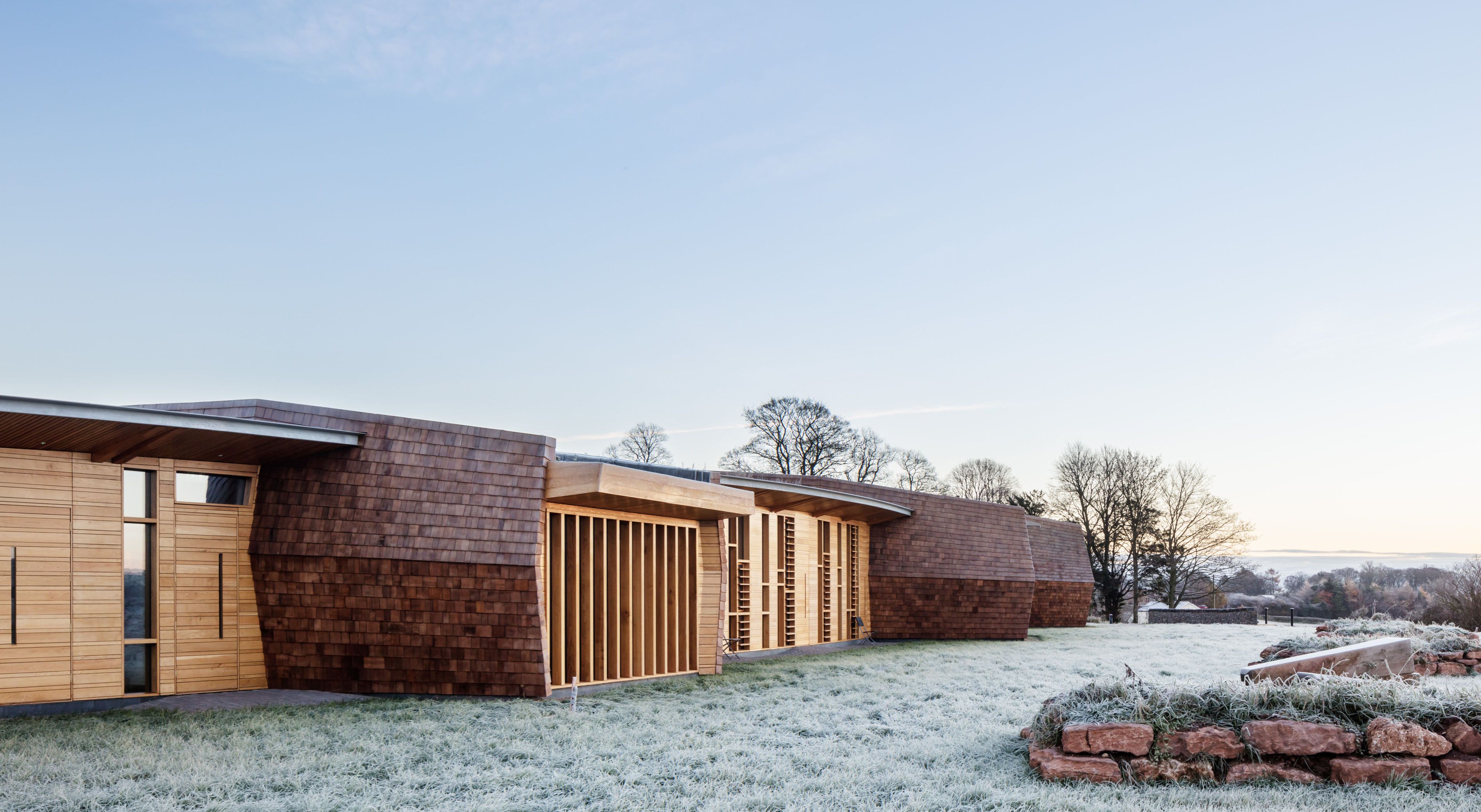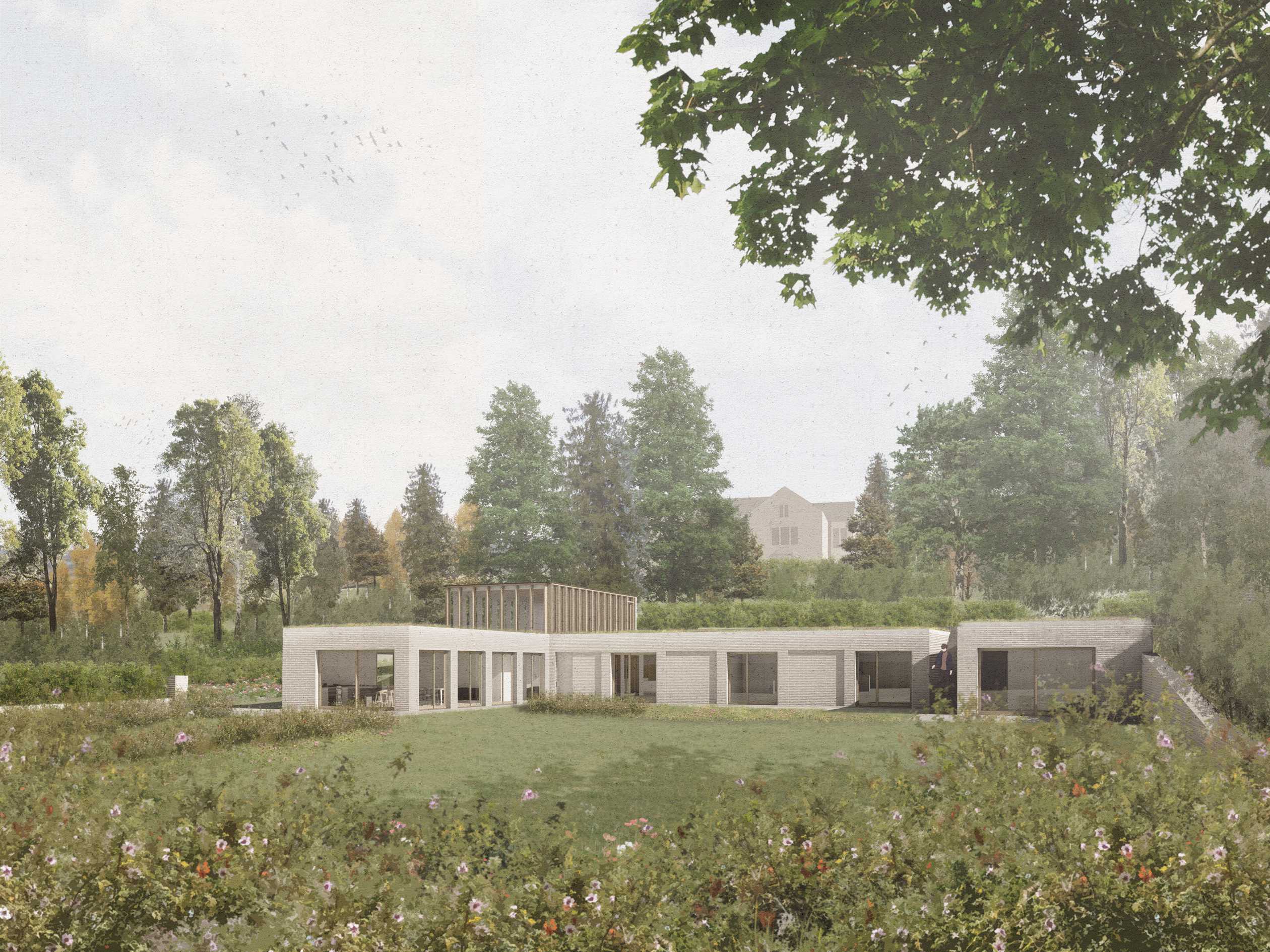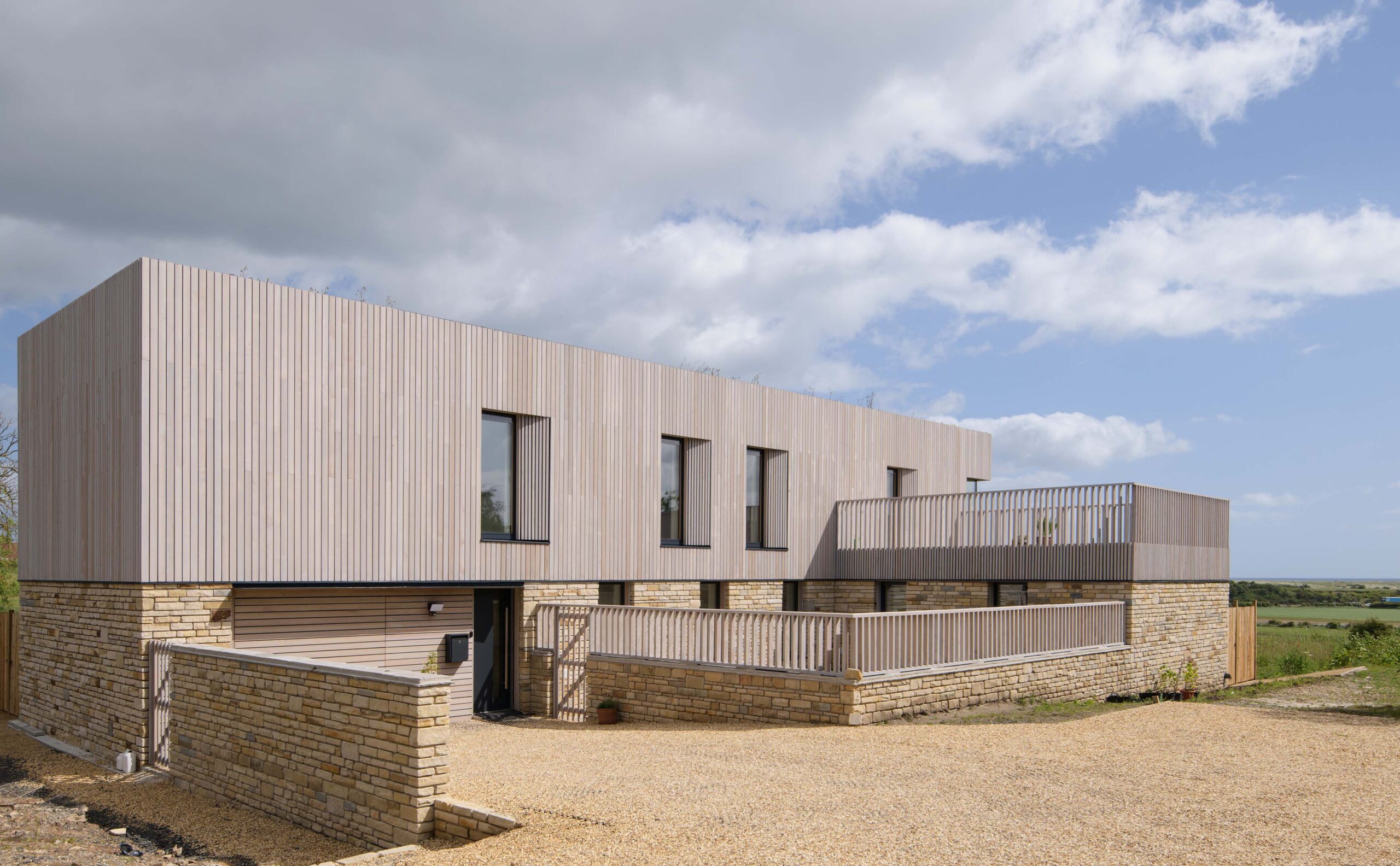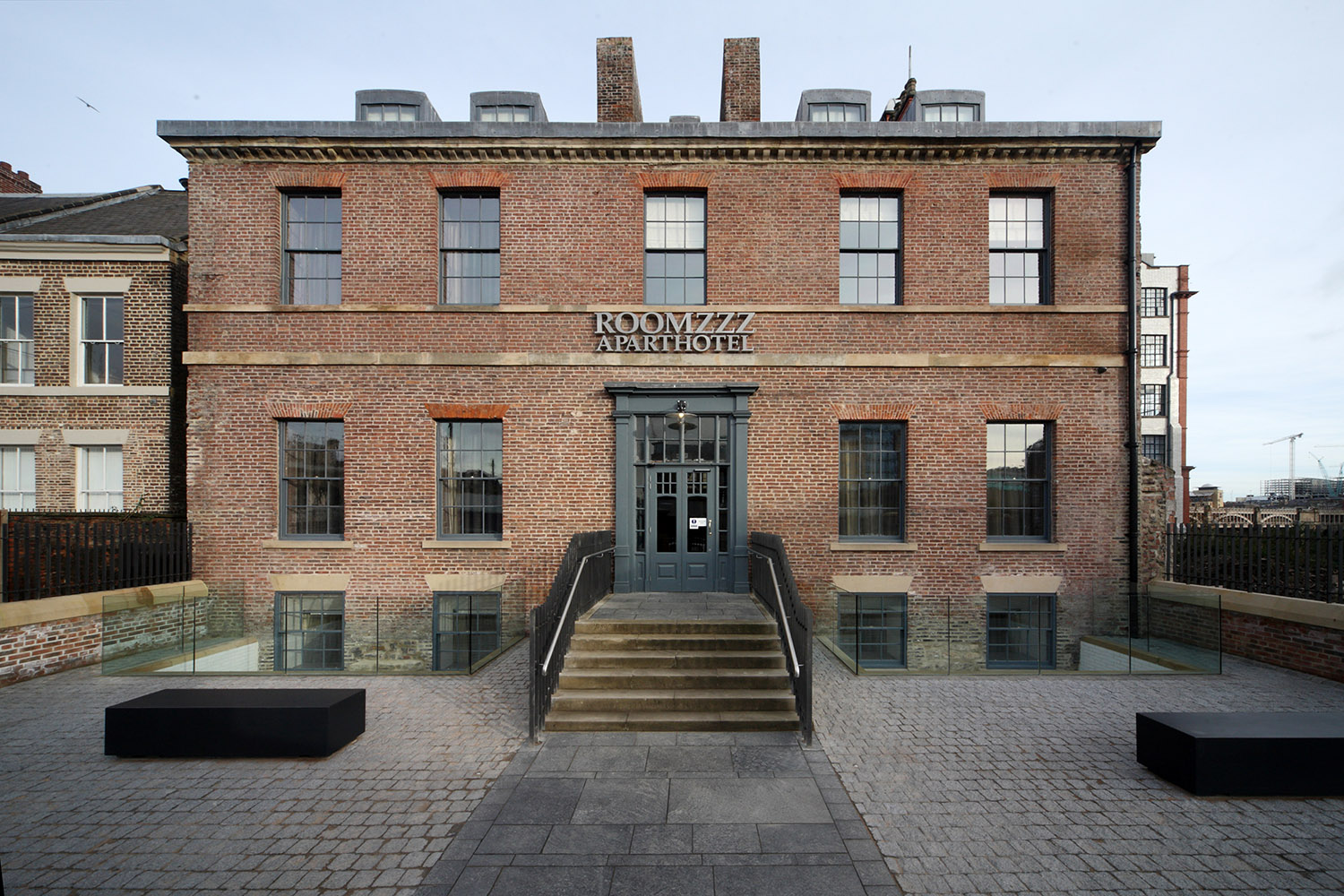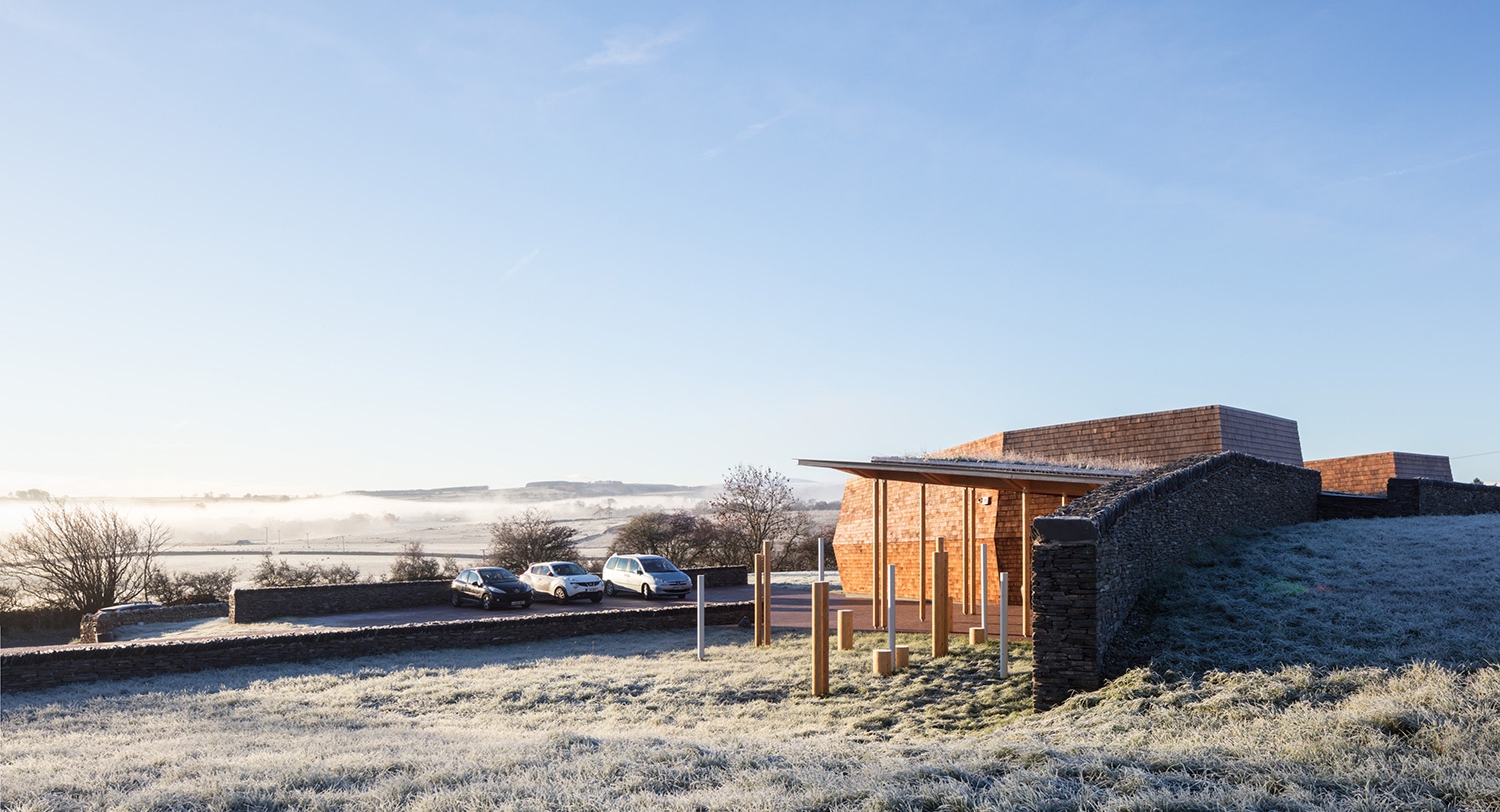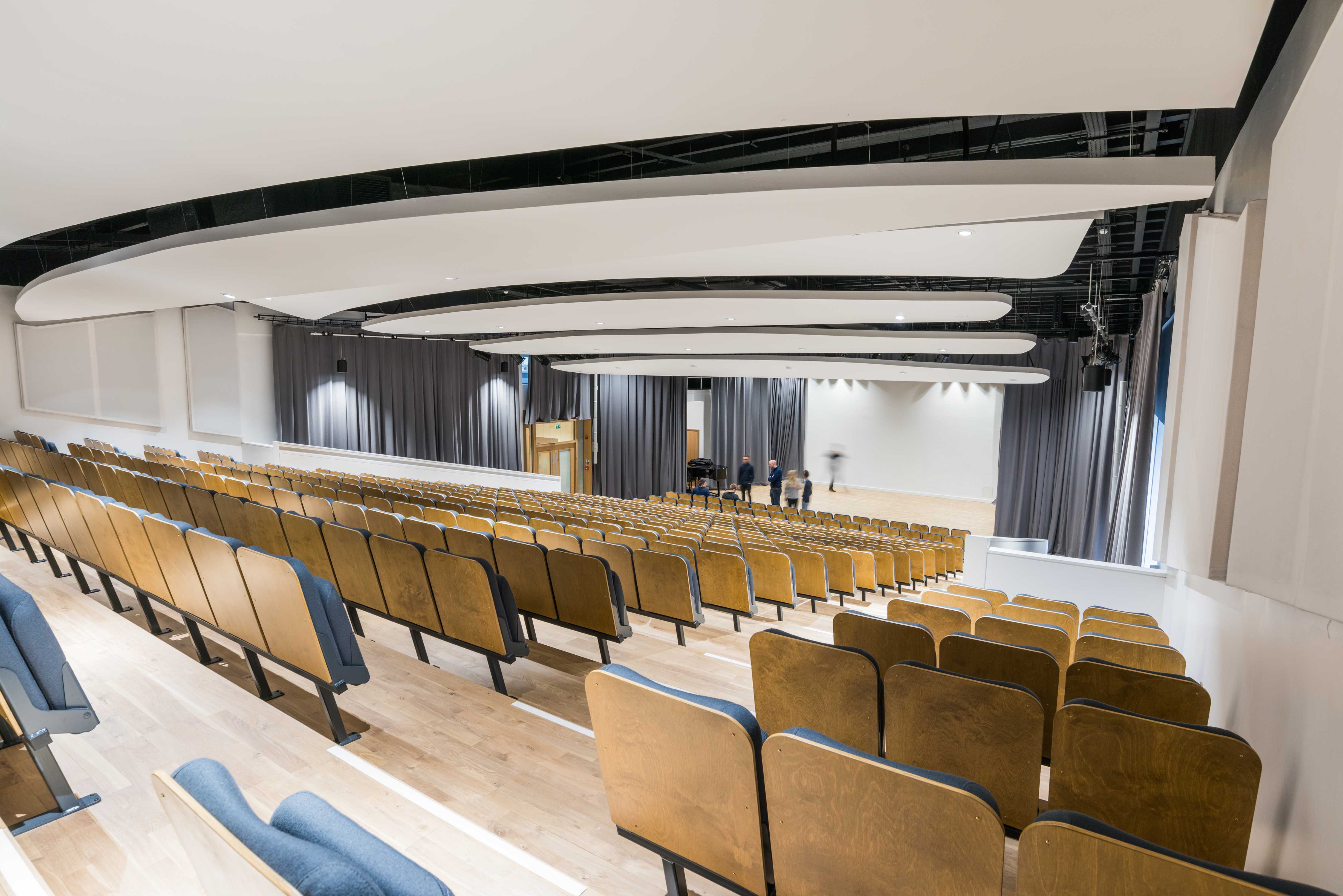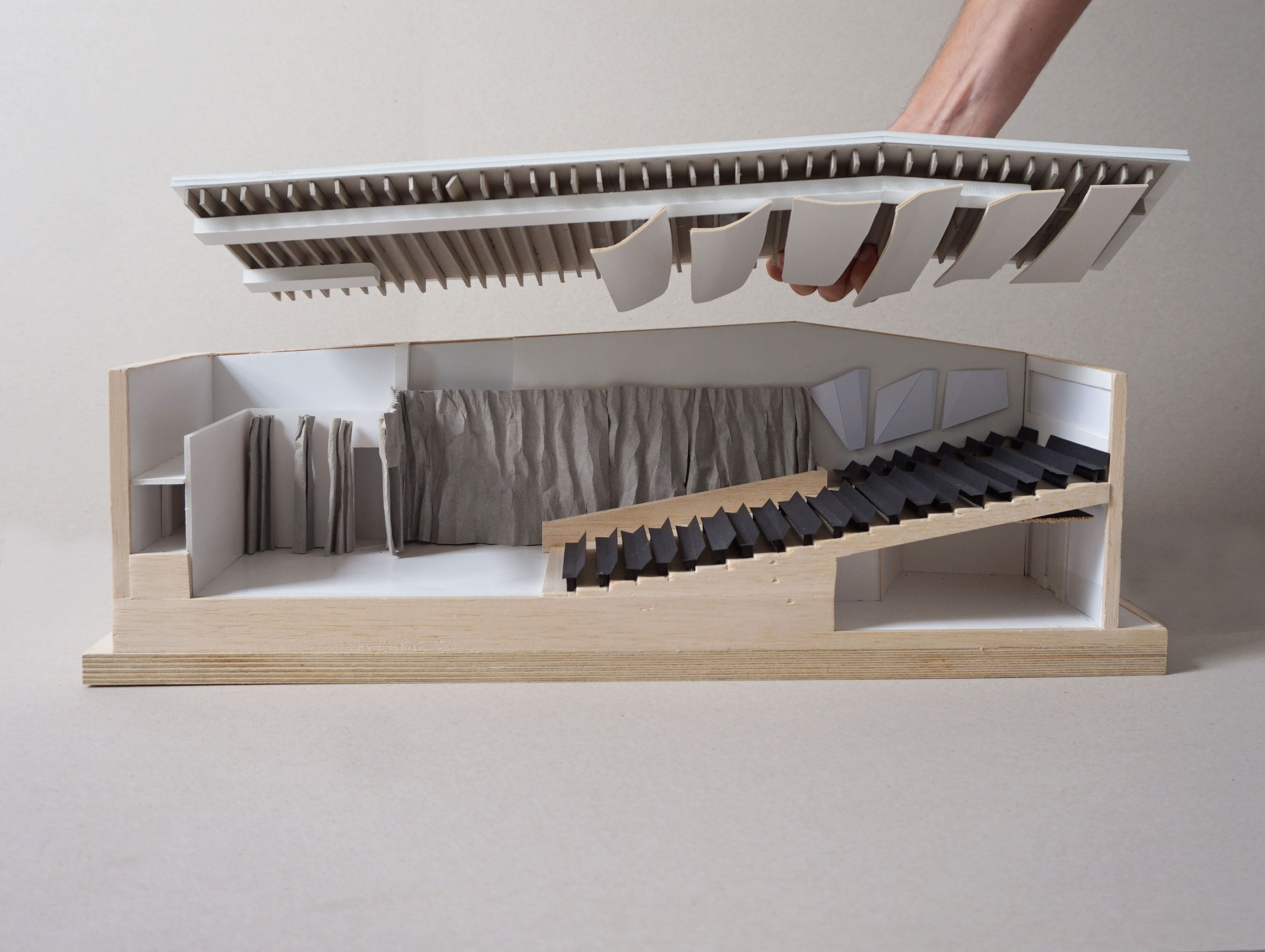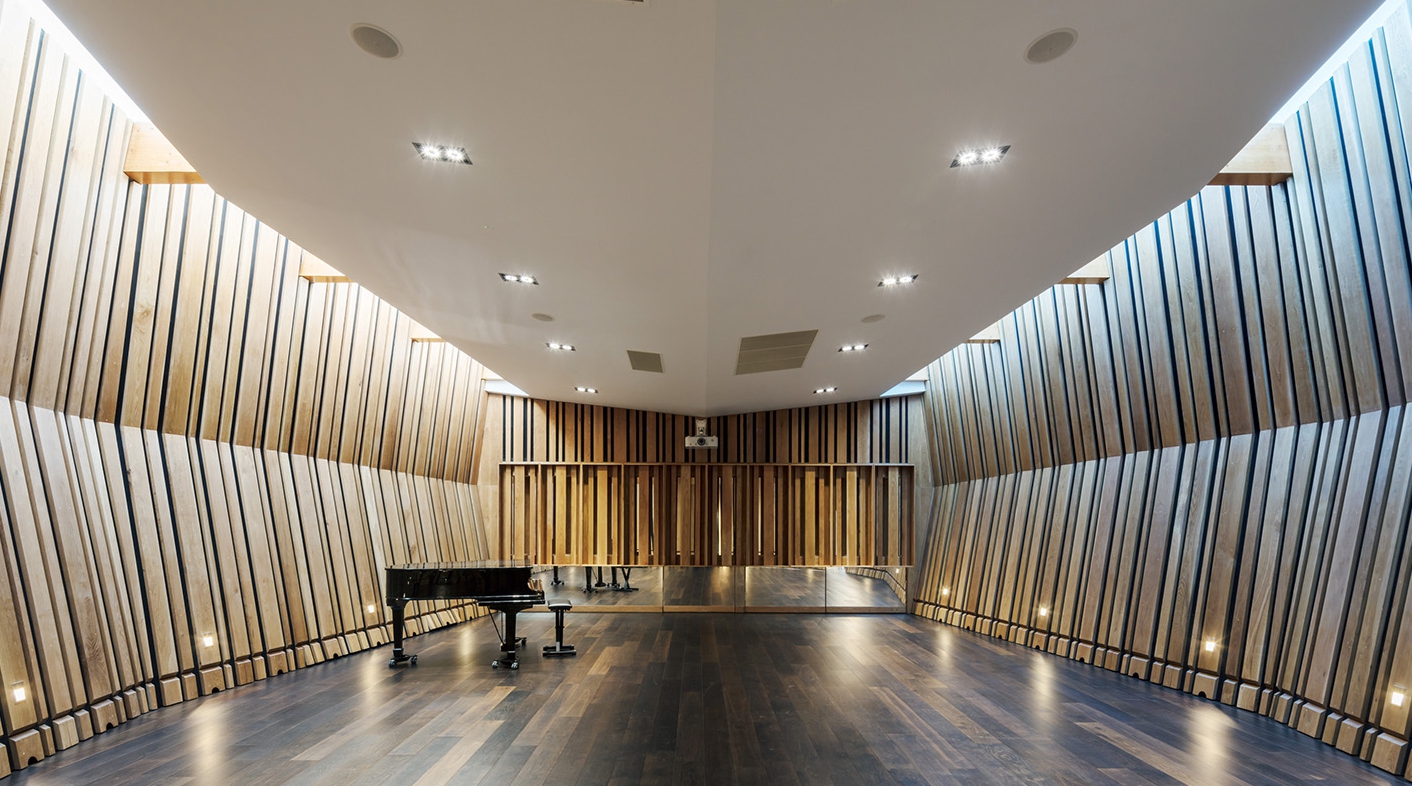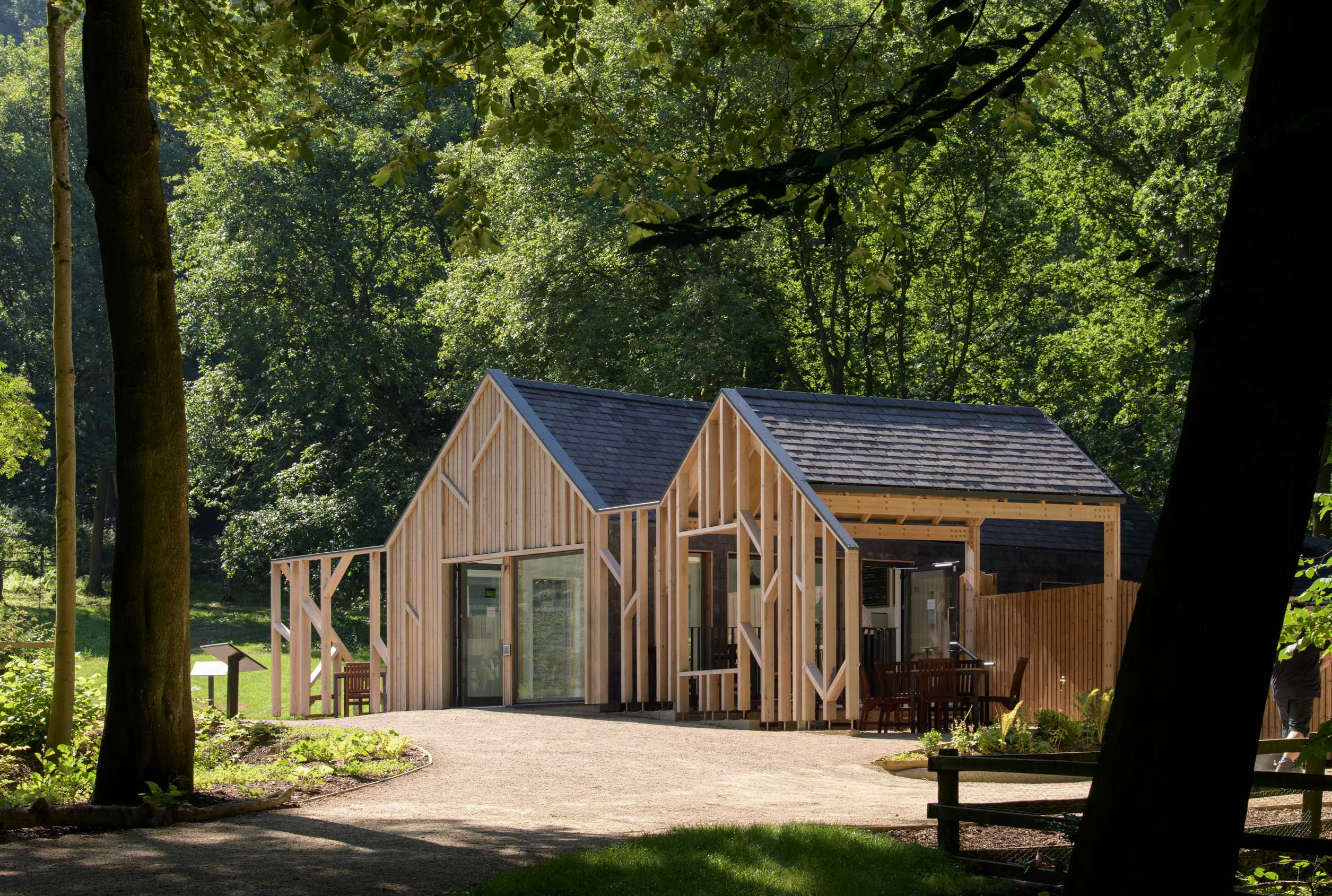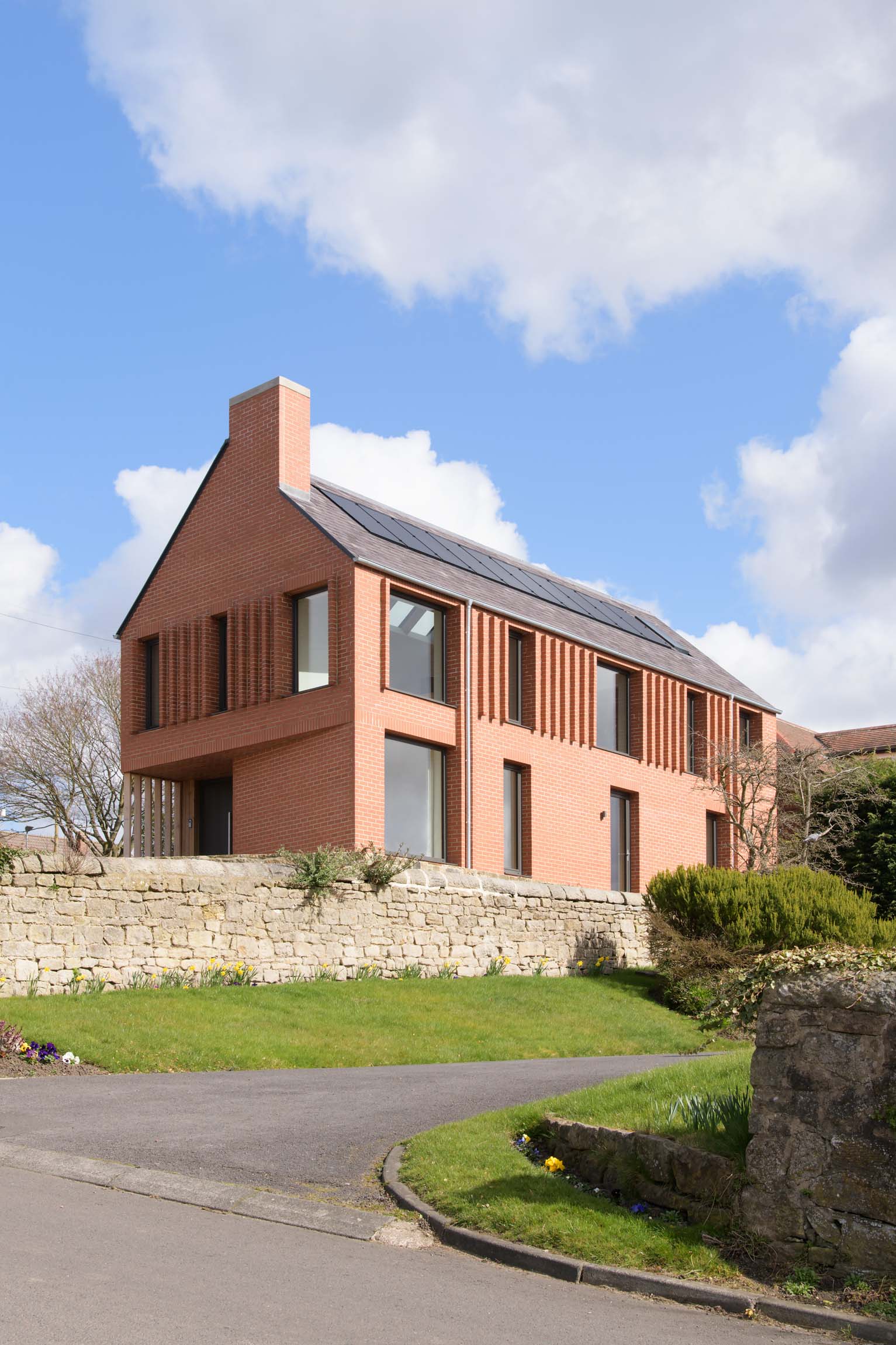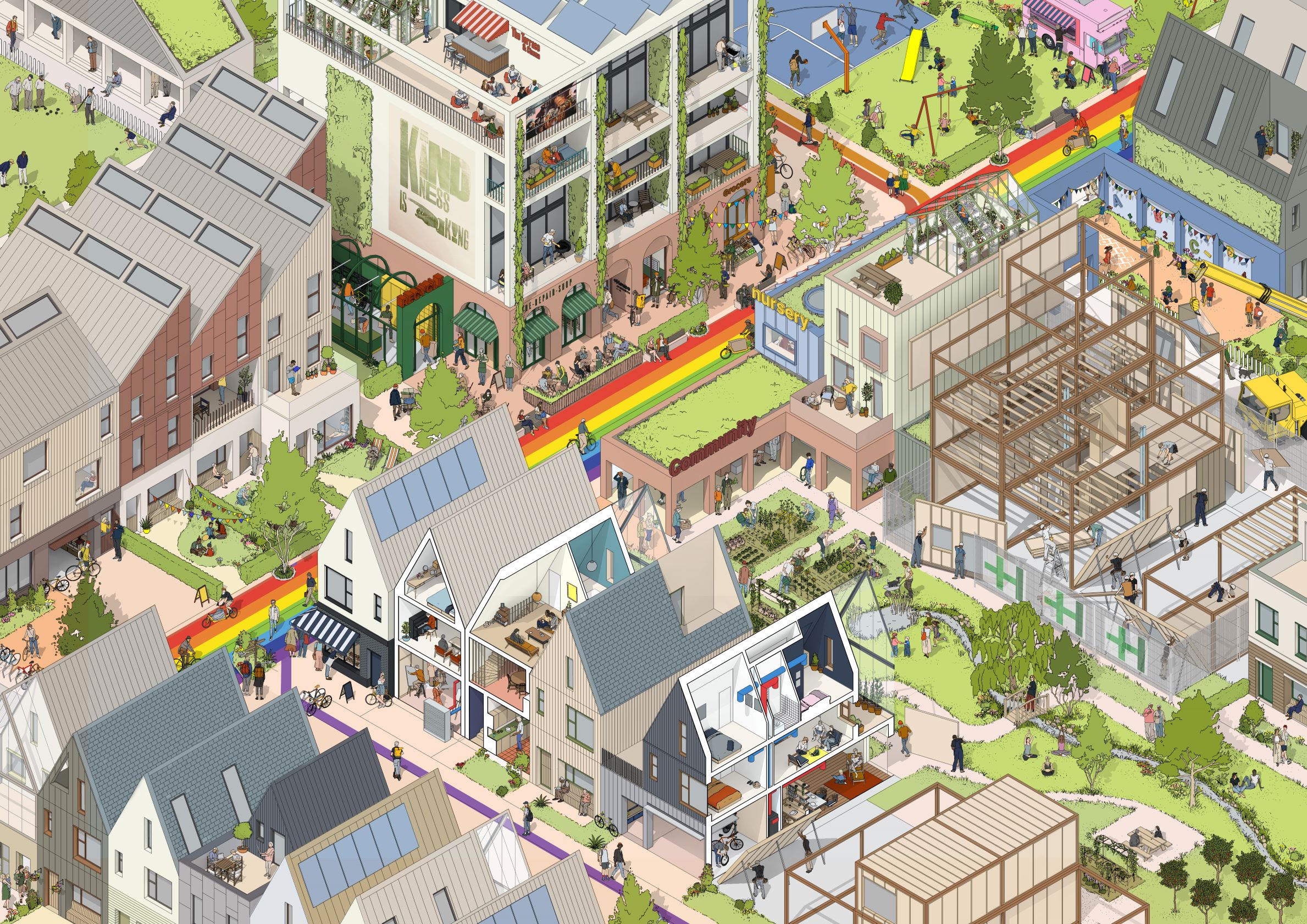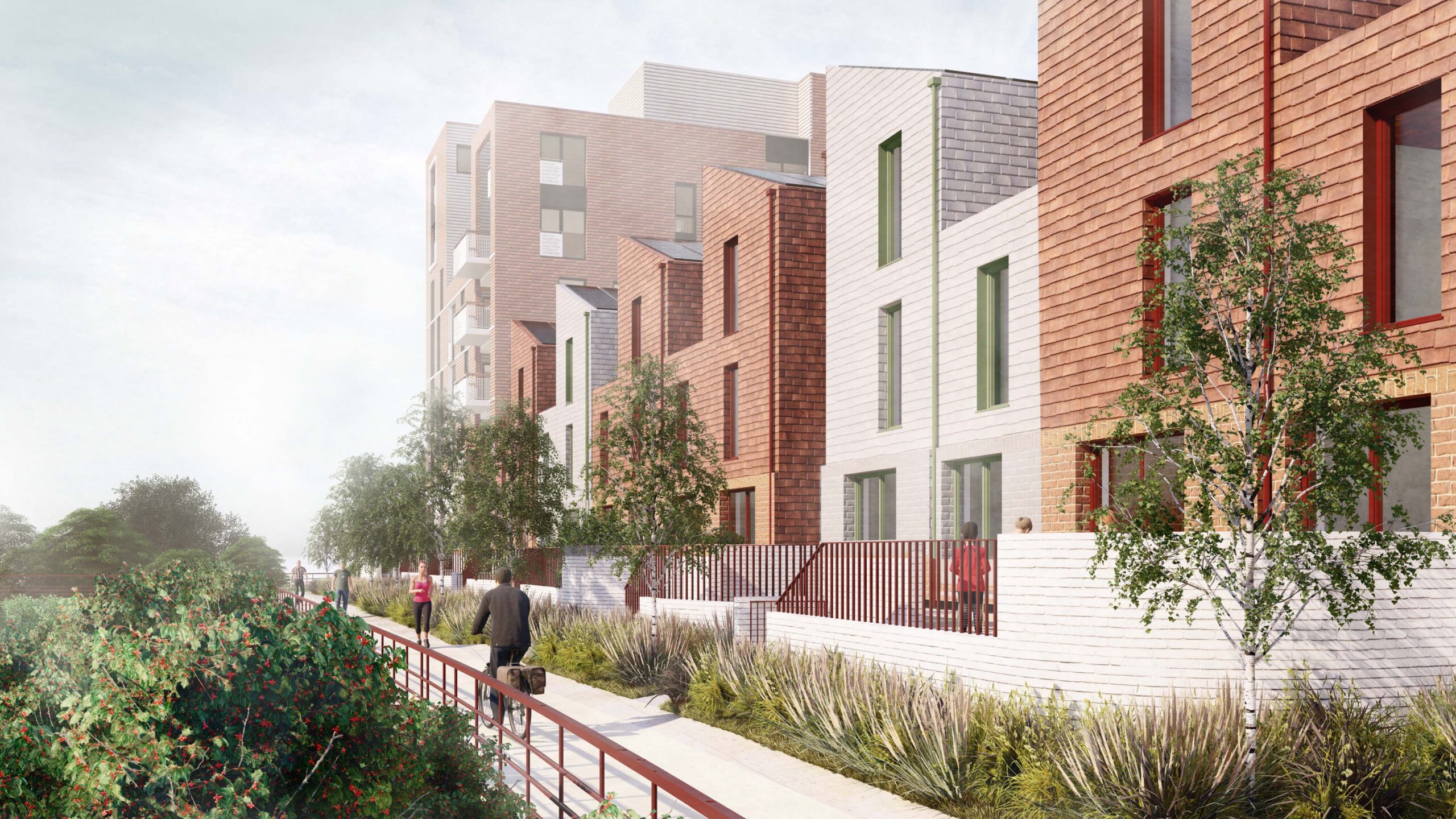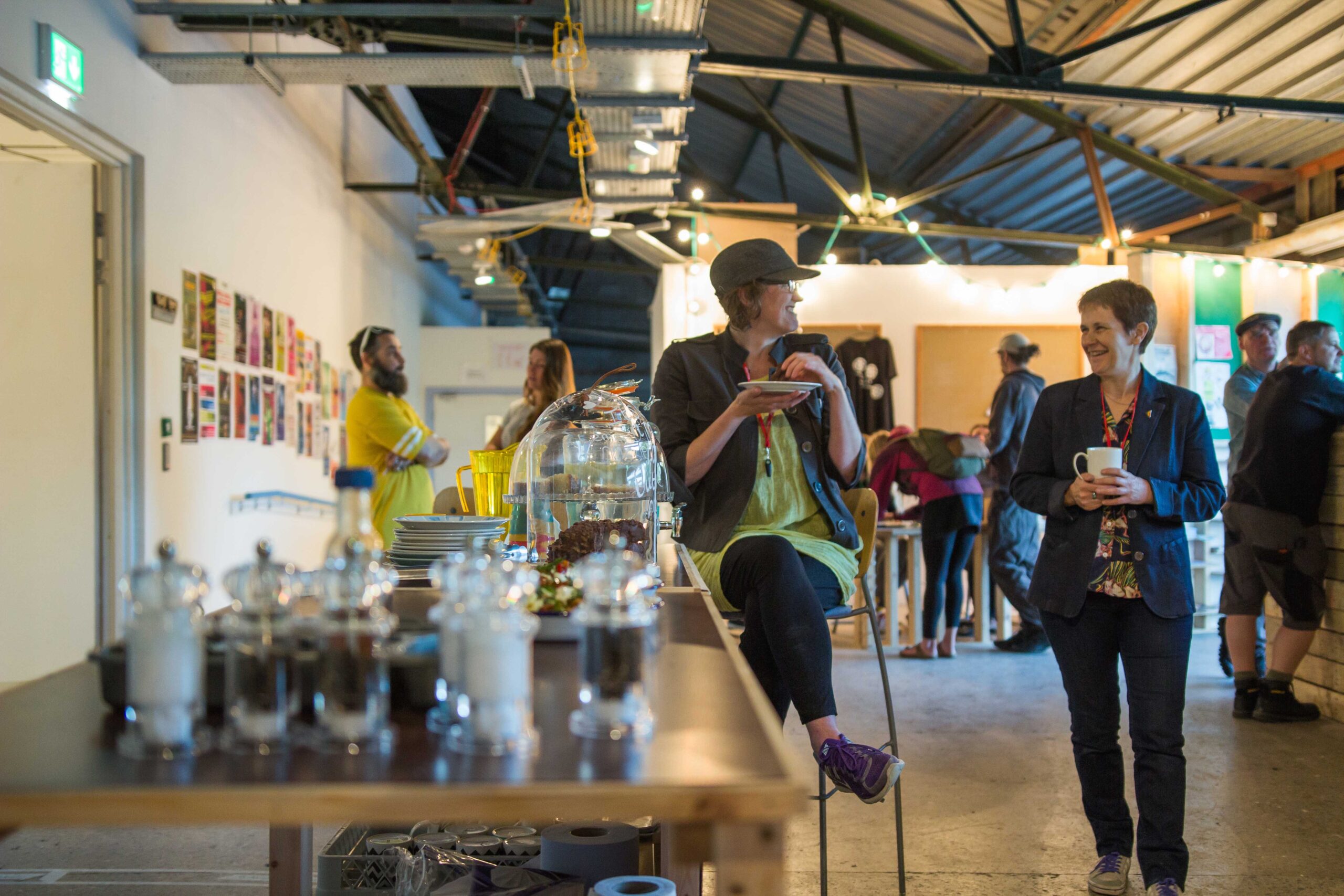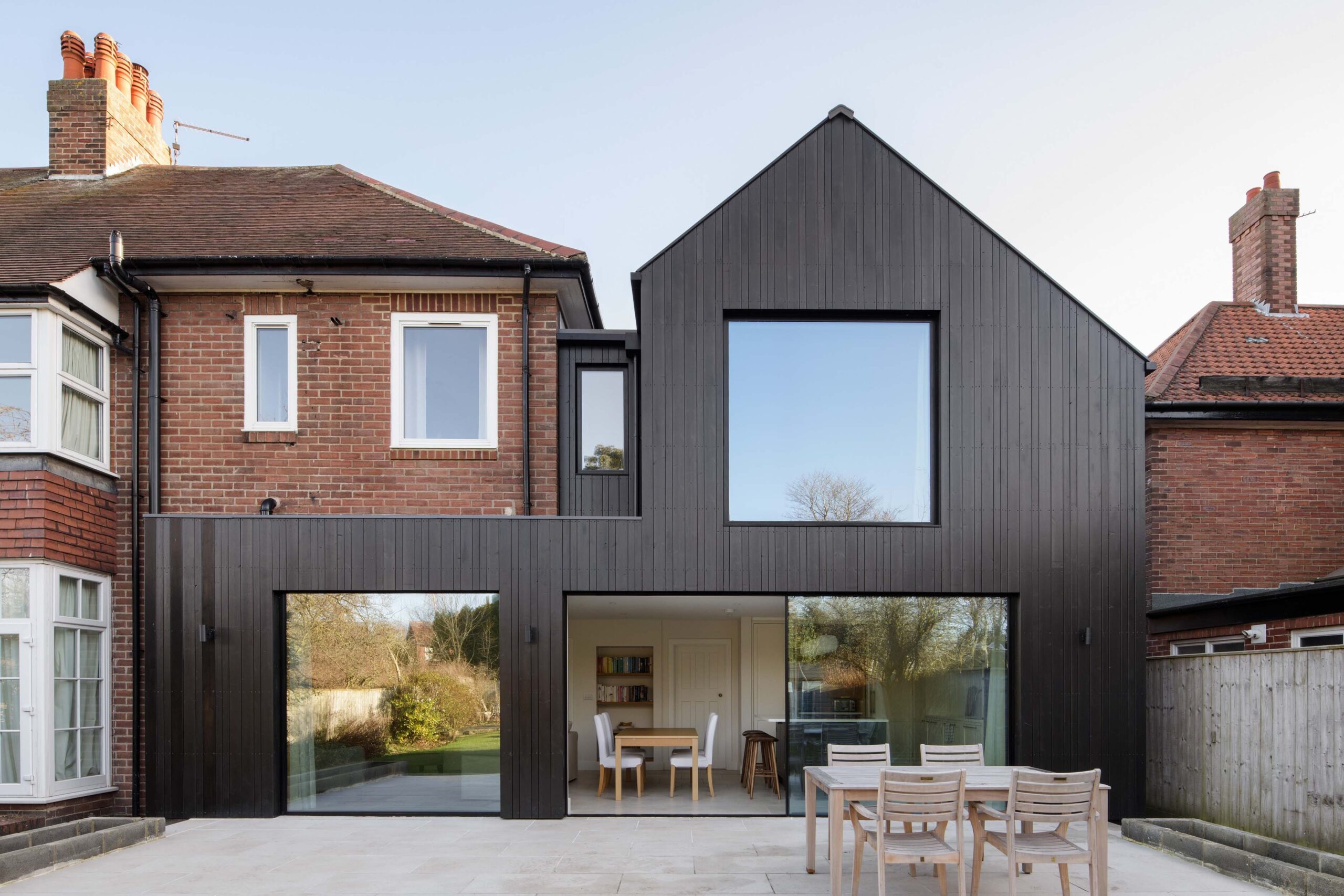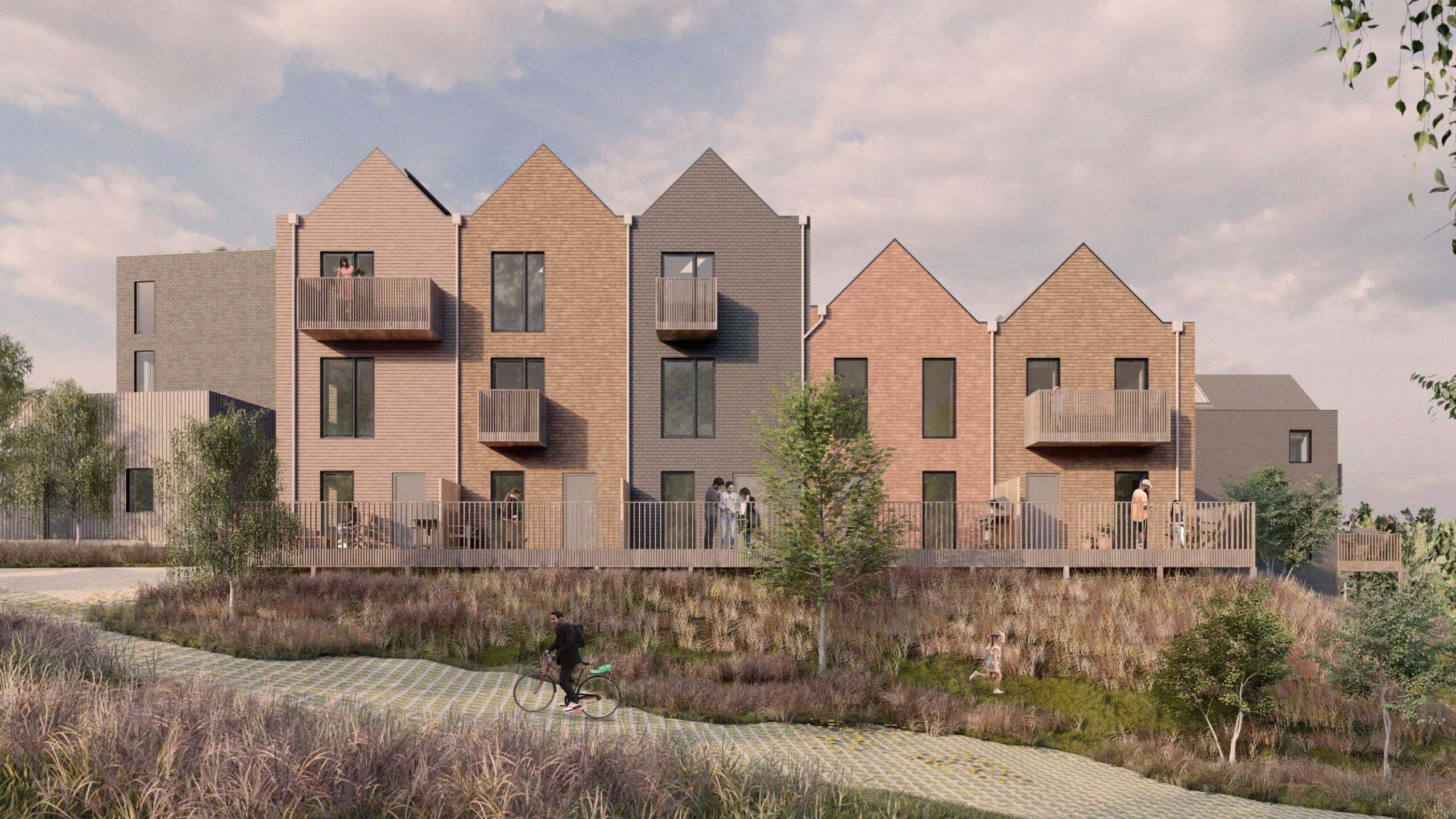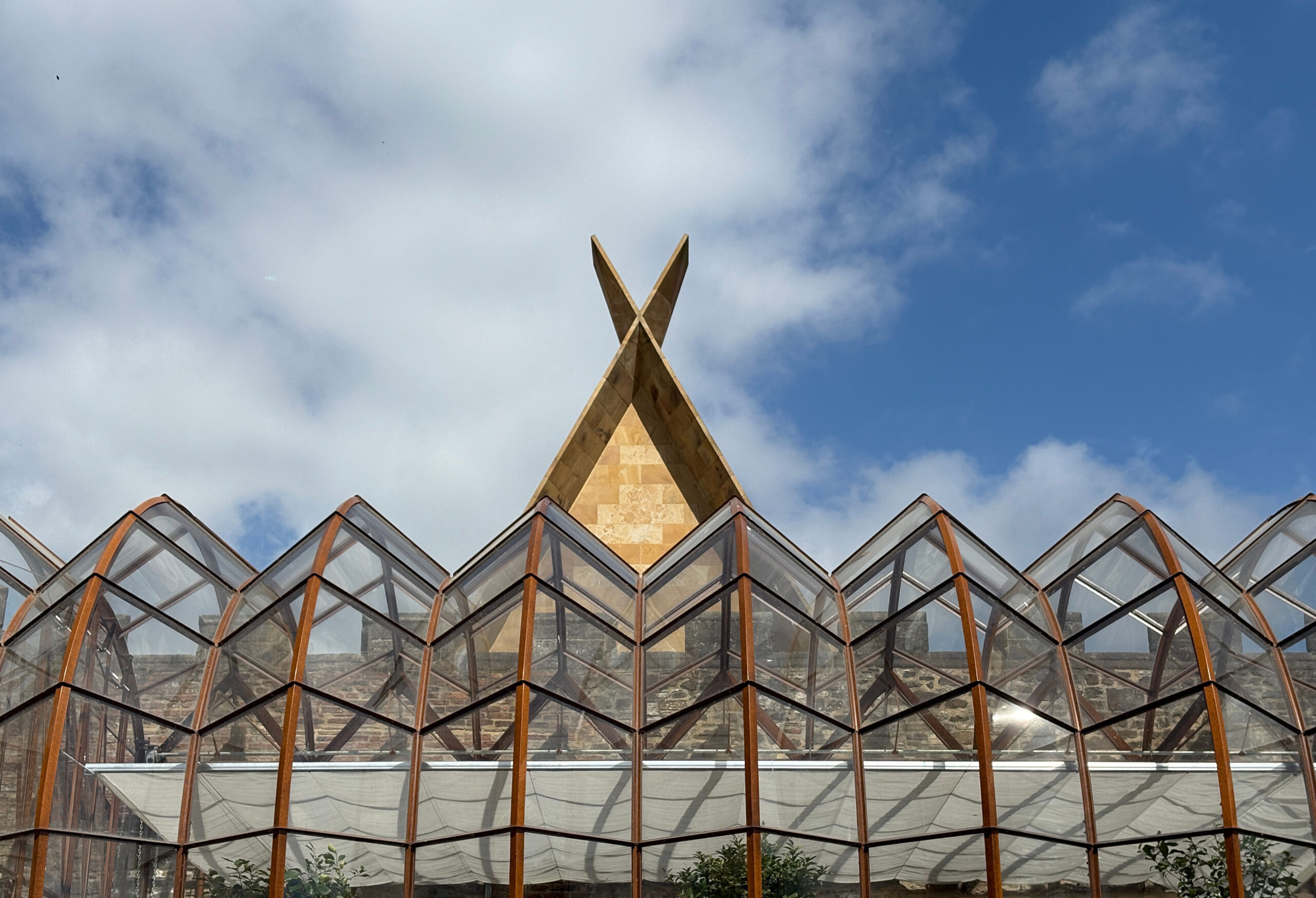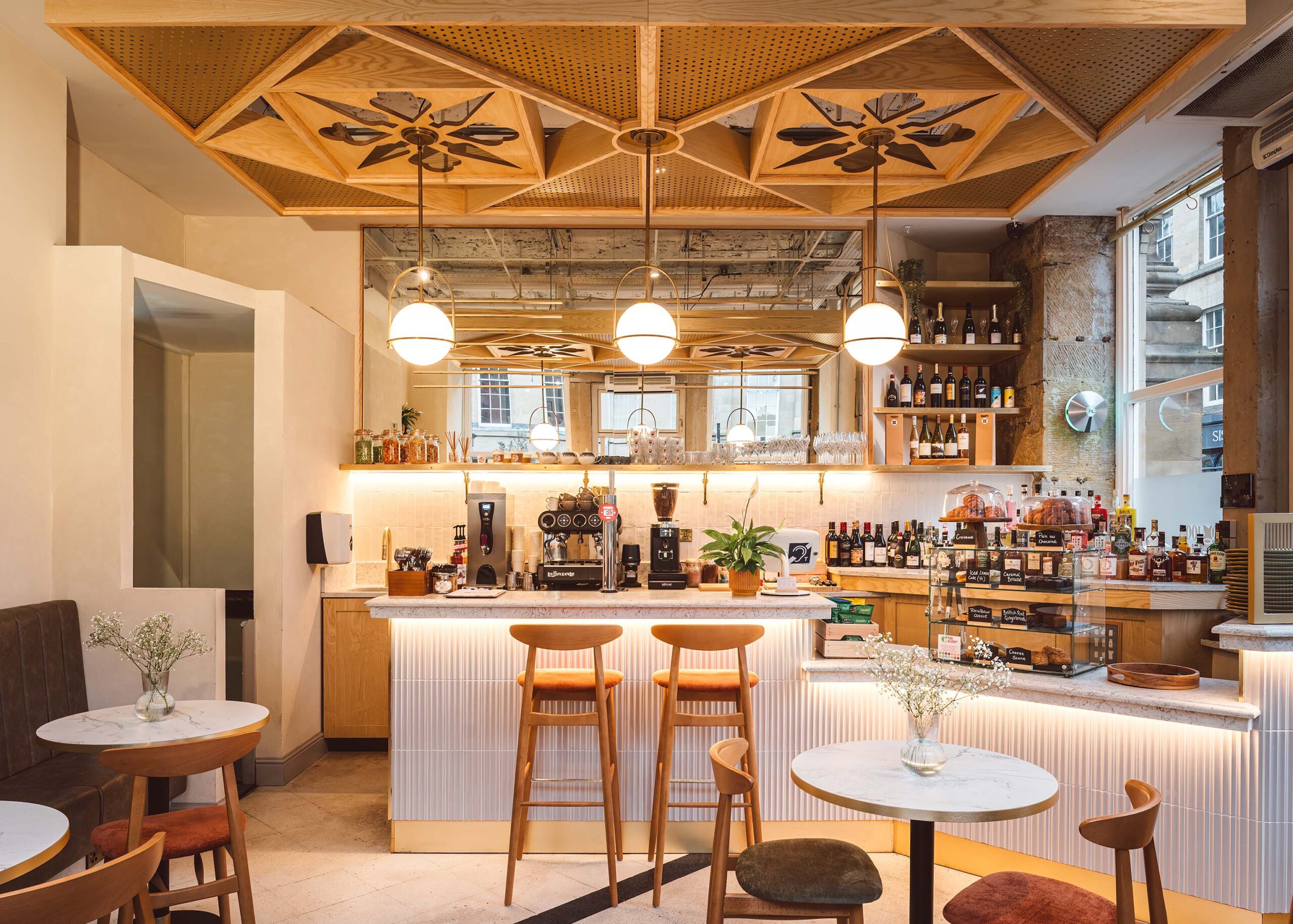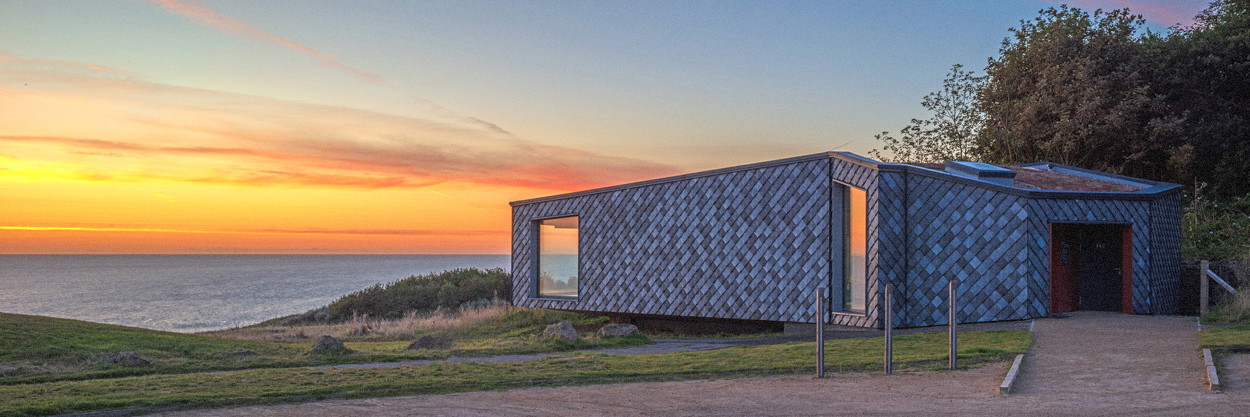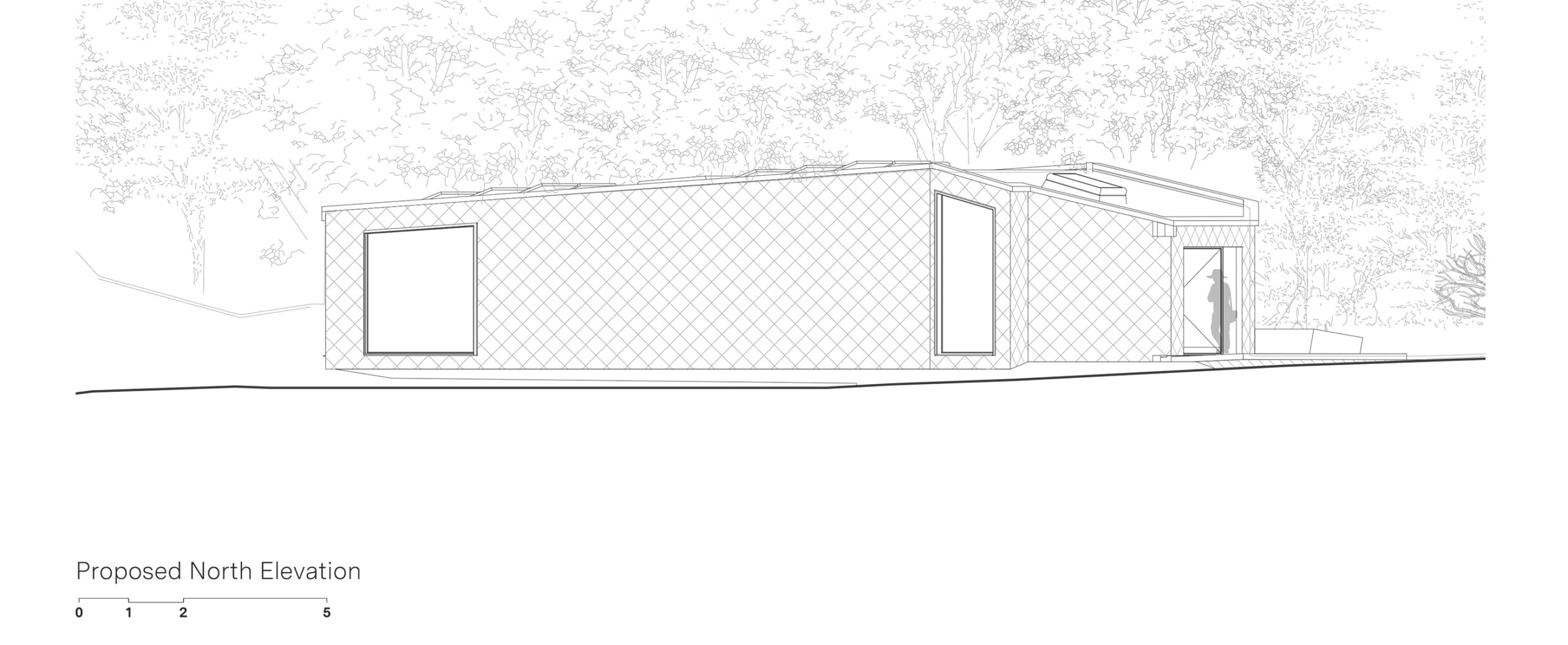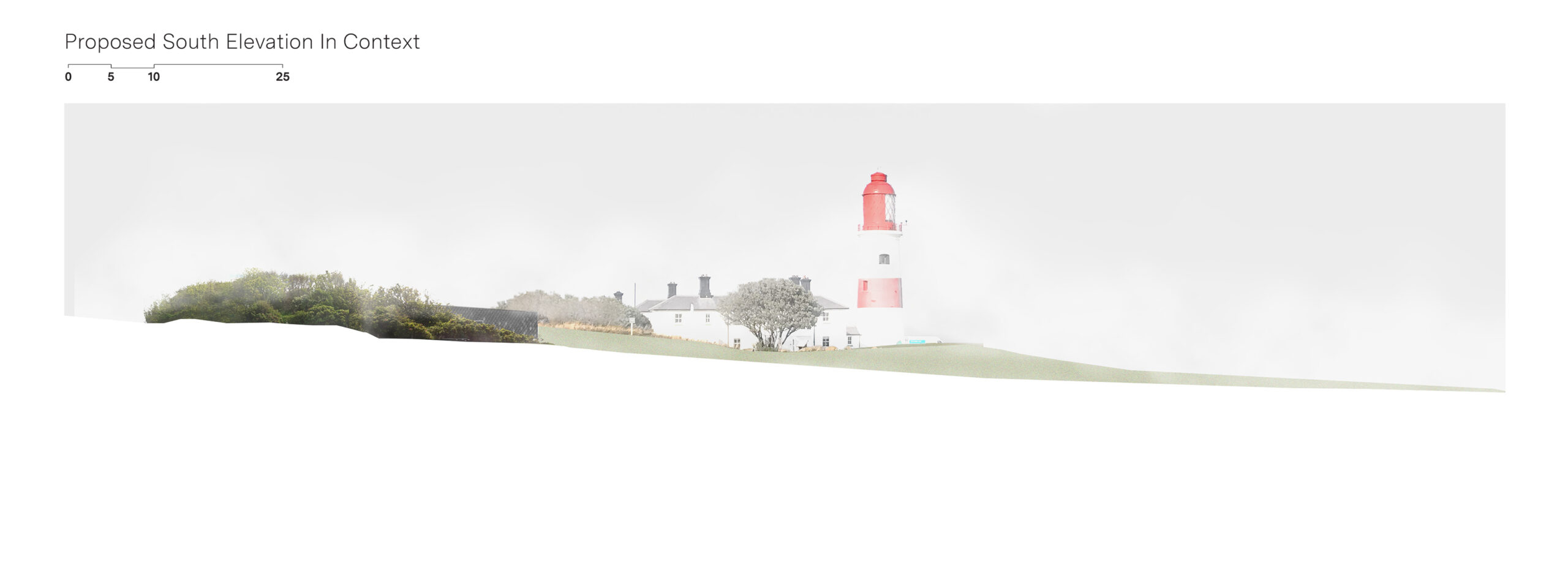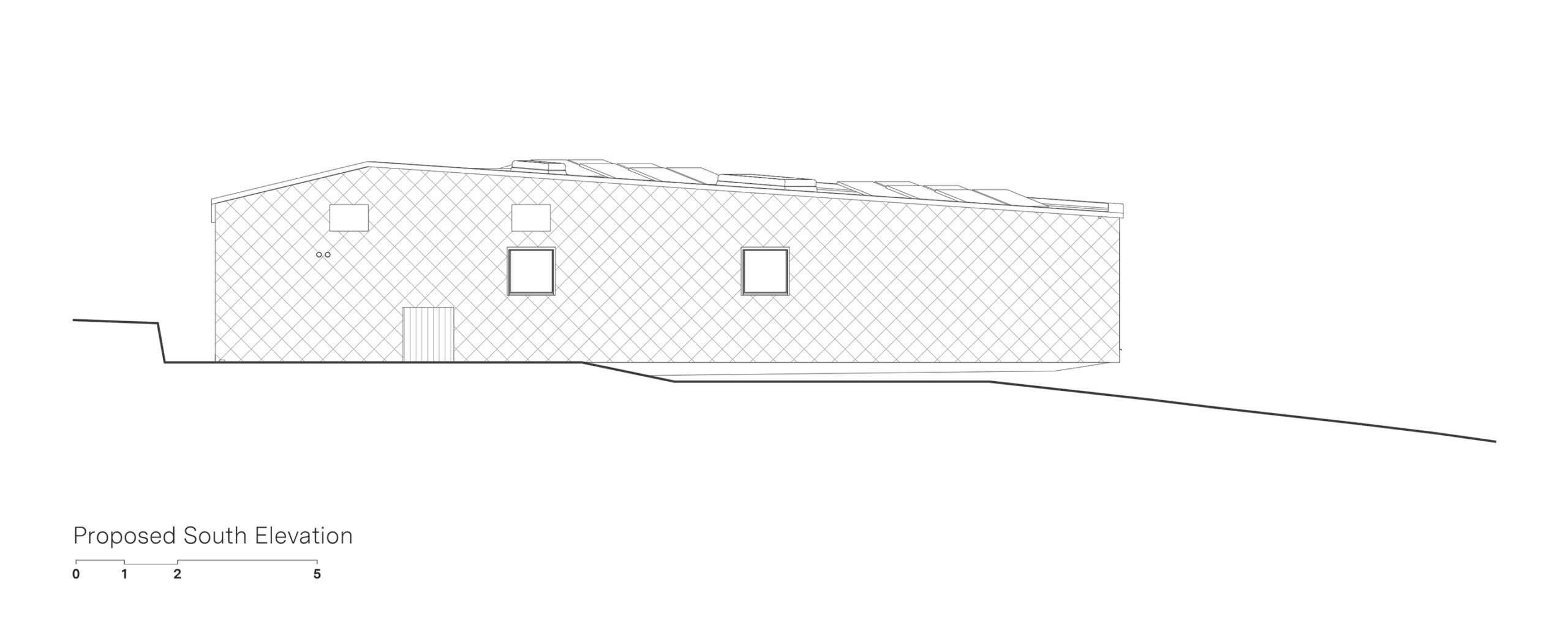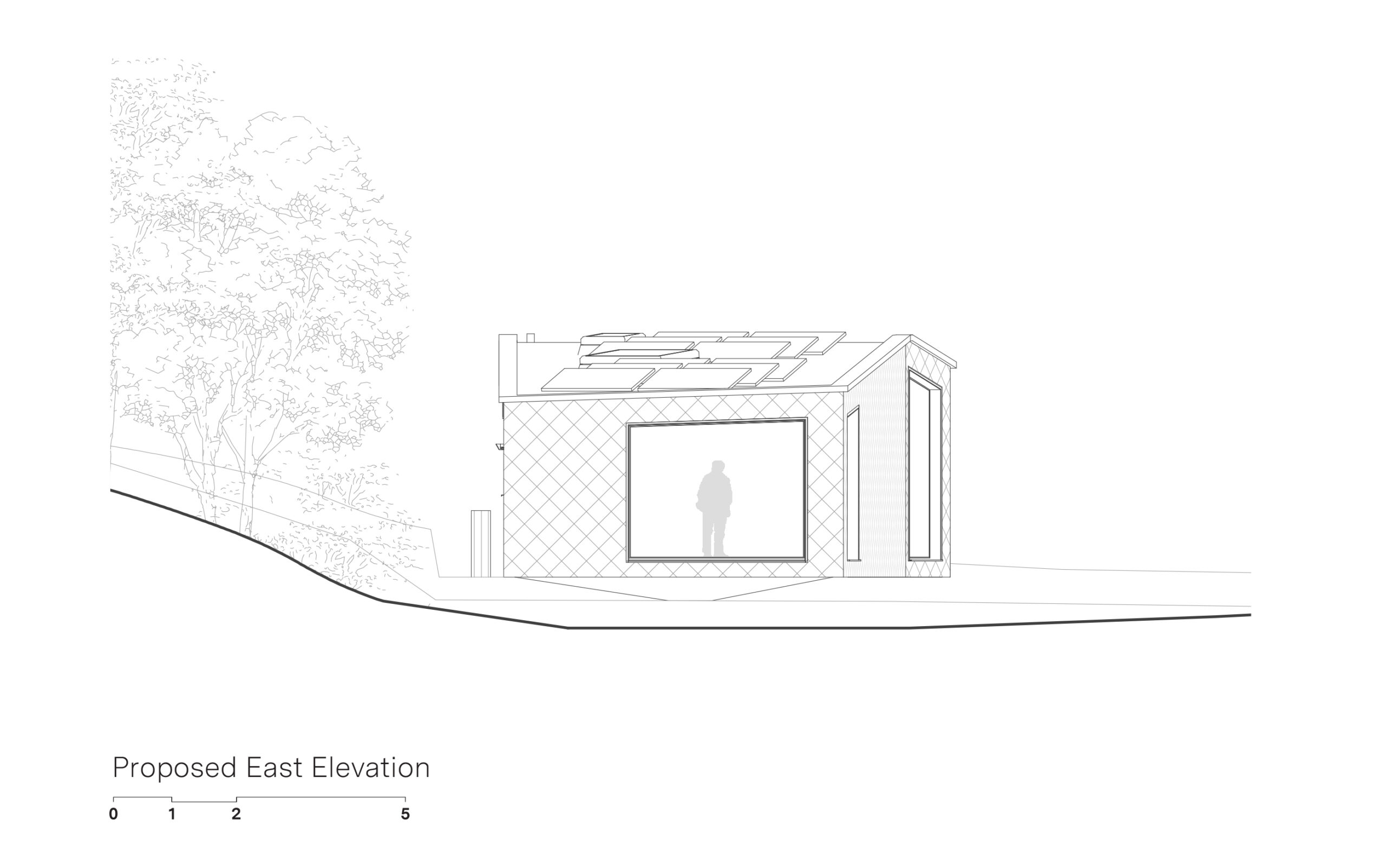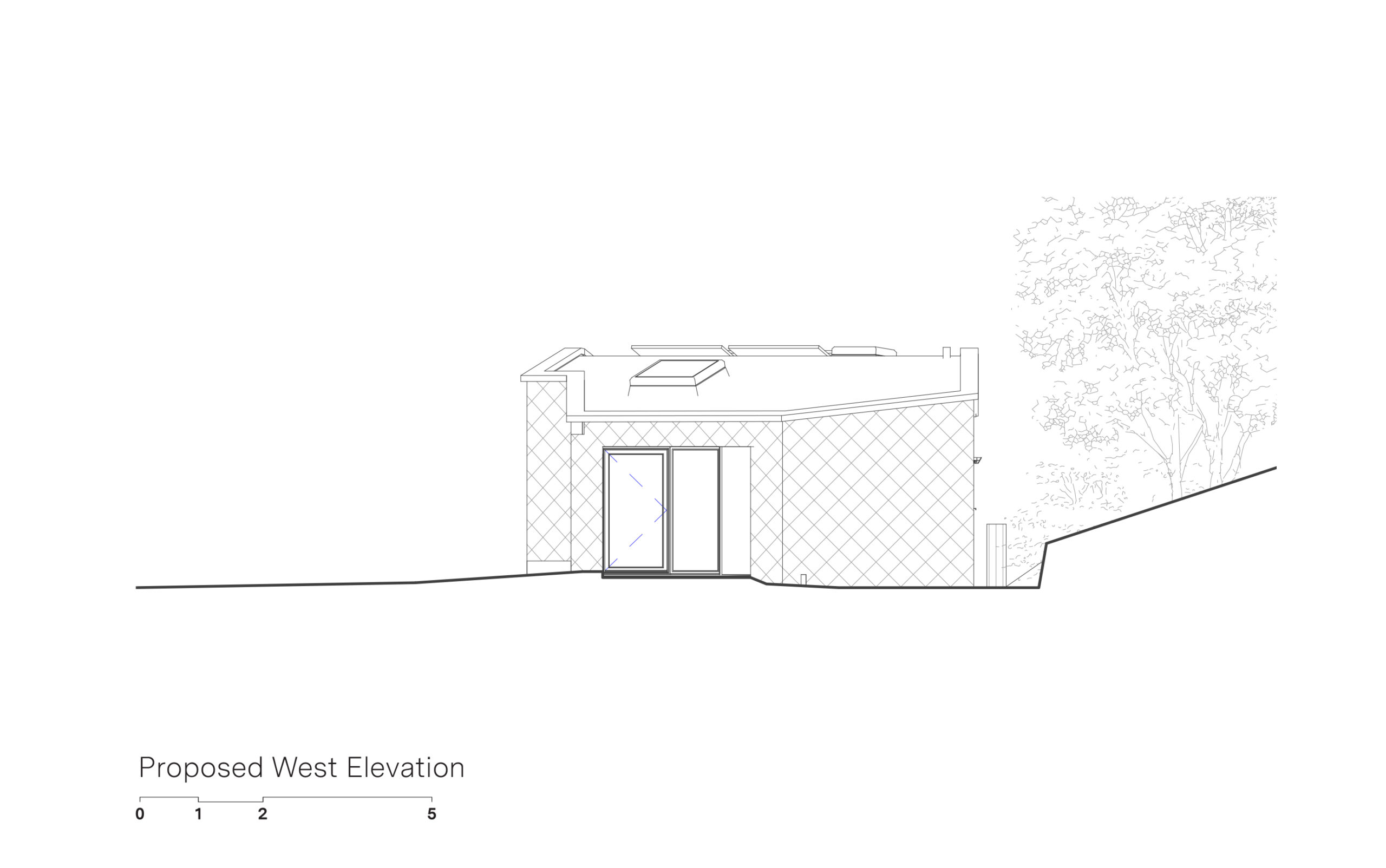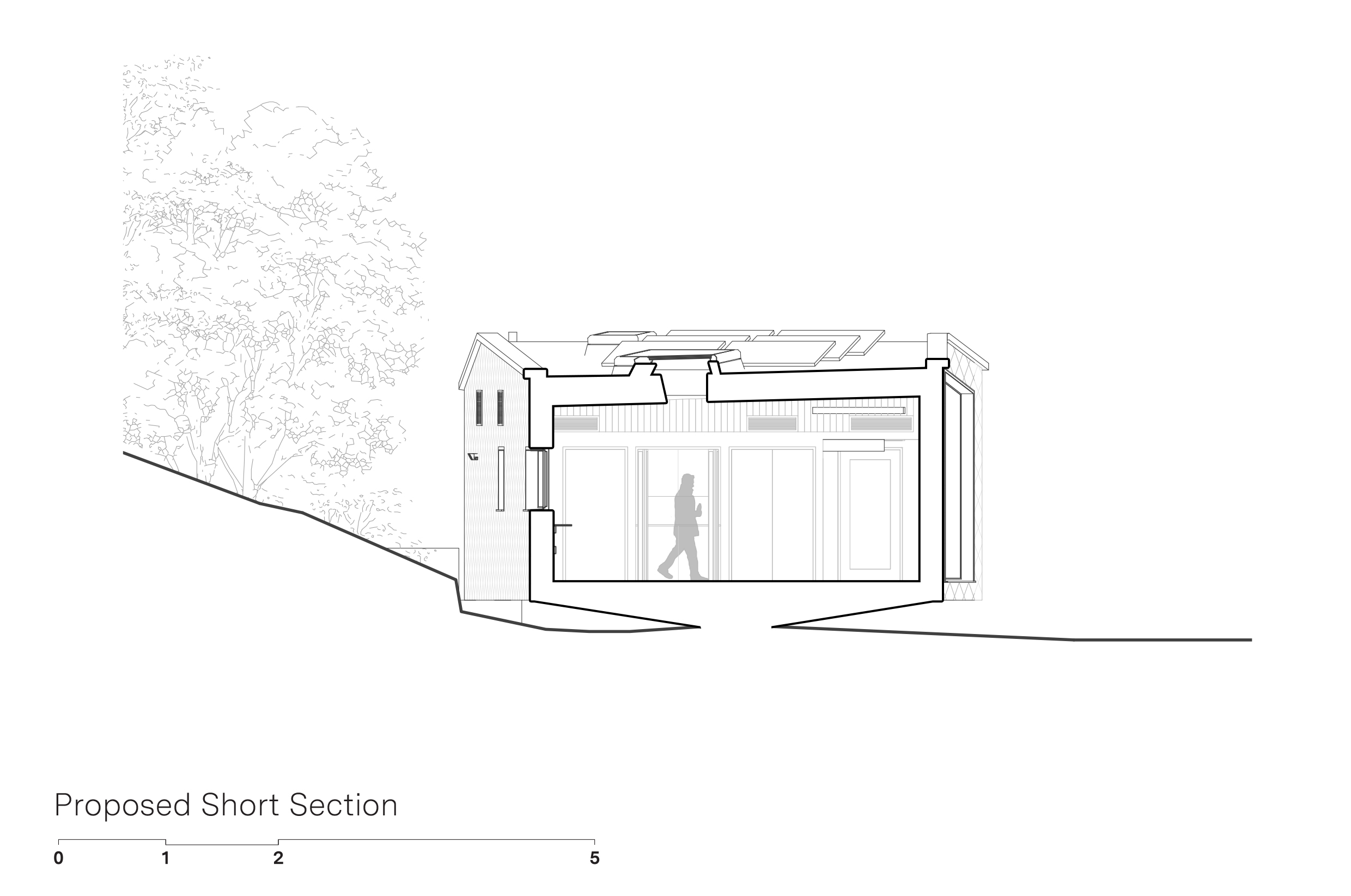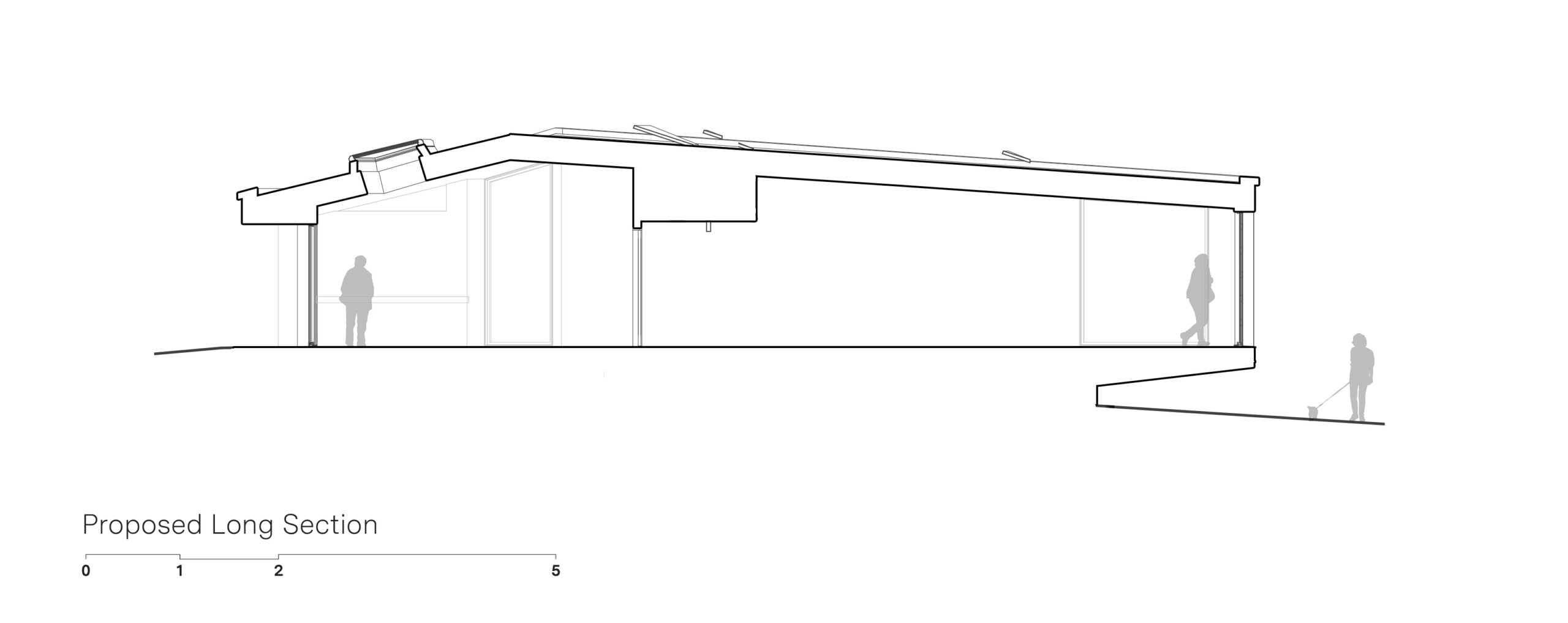Client: National Trust and Seascapes
Location: Whitburn South Tyneside
Status: Completed
Sectors: LearnRetain
Whitburn Coastal Conservation Centre, a collaboration between National Trust and Seascapes, is sited adjacent to Souter Lighthouse, Whitburn, South Tyneside.
The centre acts as a gateway to The Leas coastline. It also enables community organisations and groups to use the space as a hub for the conservation work and nature programming activities. This in turn helping to raise awareness of North East coastal conservation issues
WCCC is located on an extremely complex site. Complexities include it is a Greenbelt; in the curtilage of a Grade 2* listed lighthouse; on top of an infilled quarry; ground gases; an ordnance hazardous area (on a historic firing range); located directly over a huge historic drainage pipe as part of the quarry works. Due to the nature of bird conservation work had to be adjacent to the bird netting area on the hill.
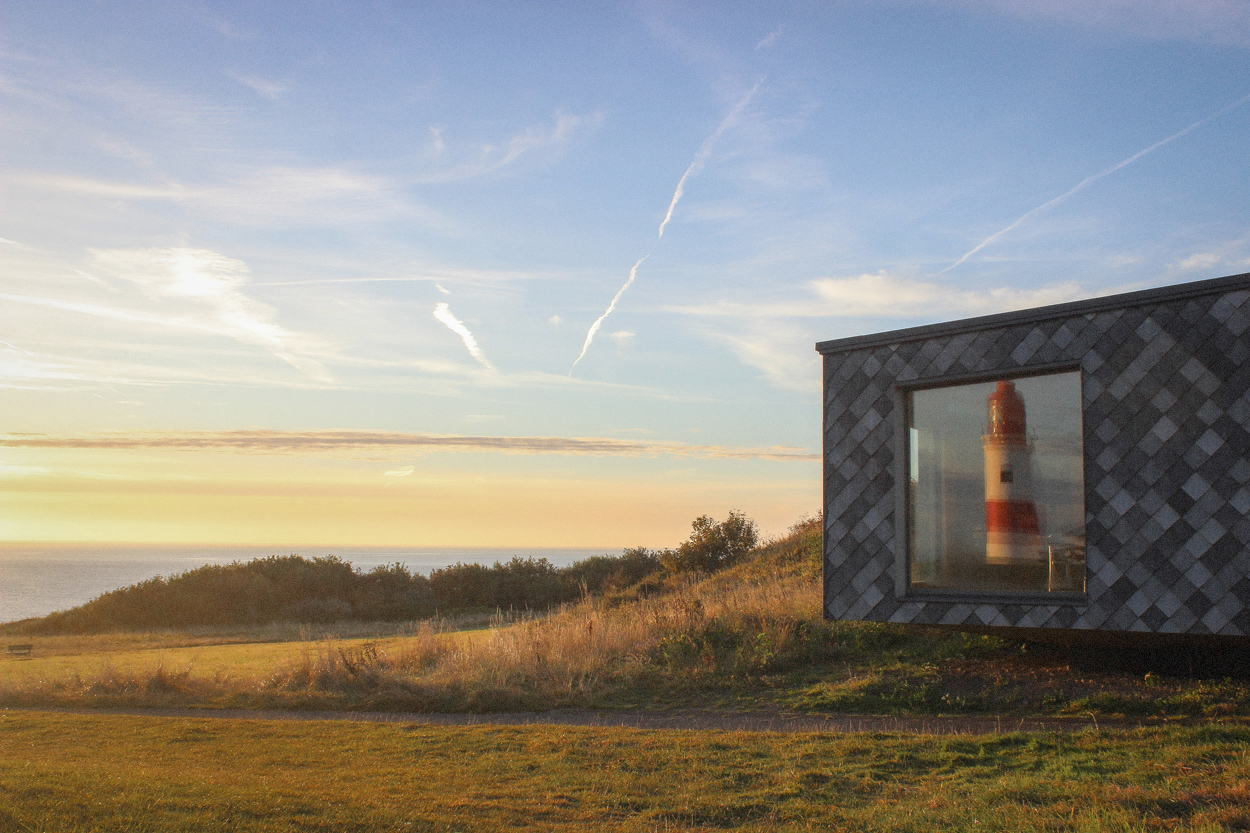
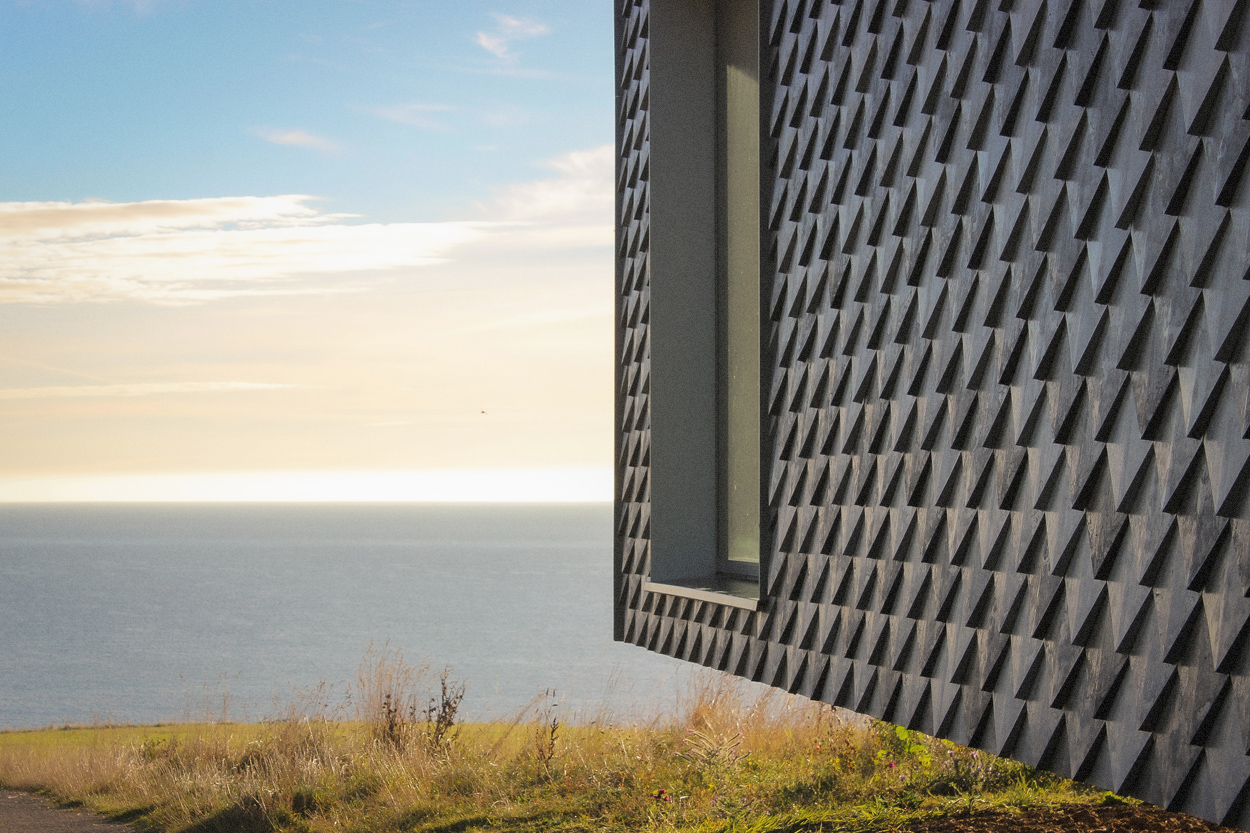

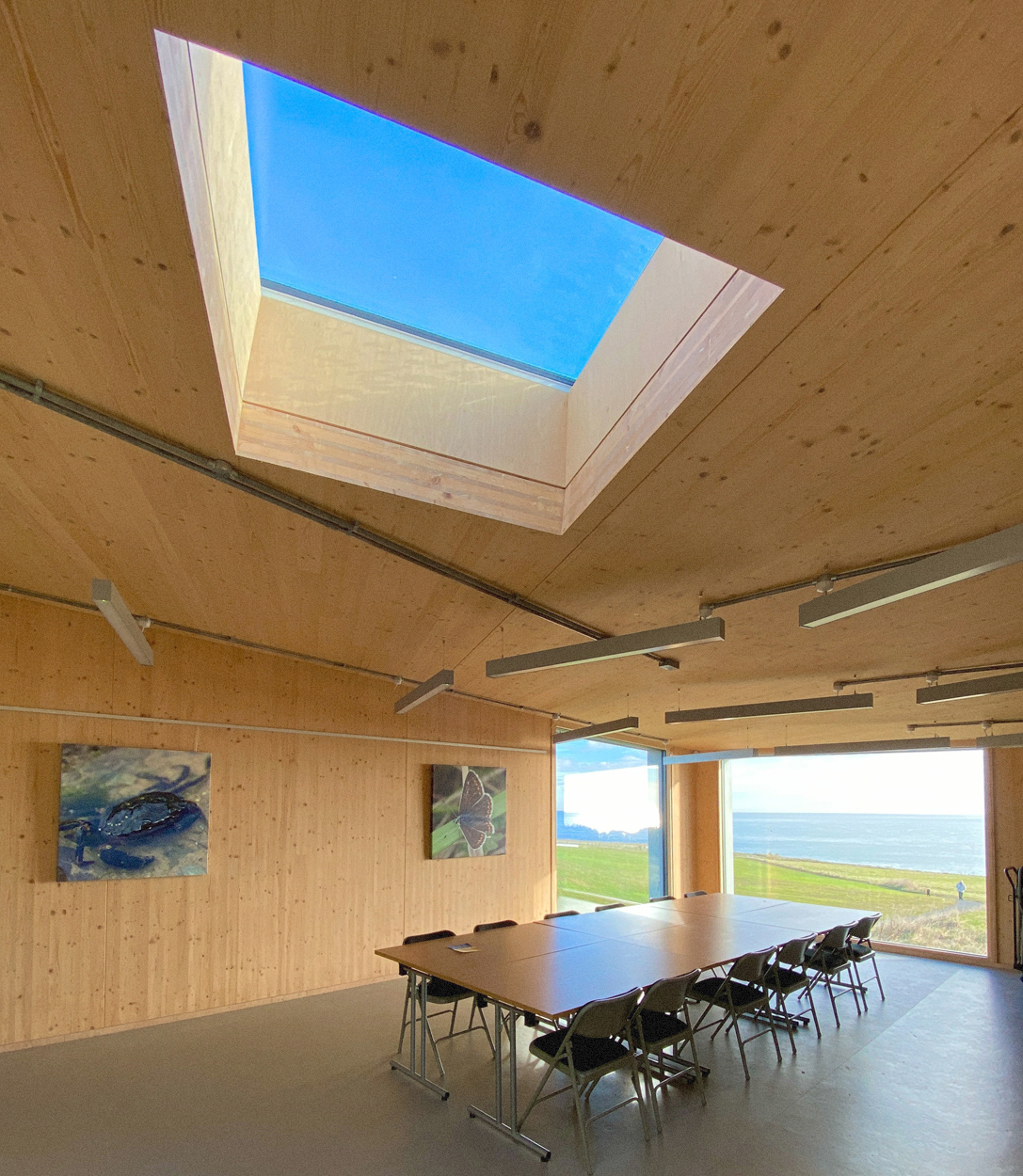
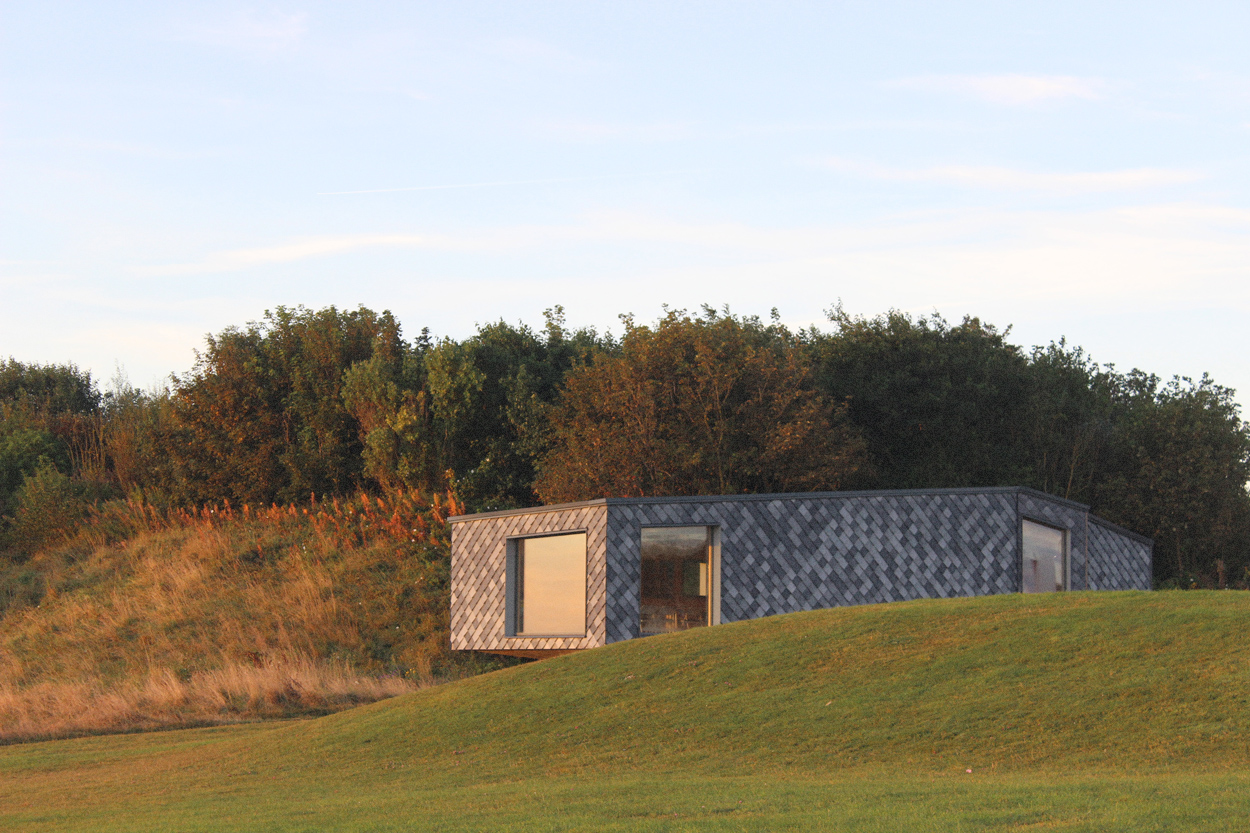
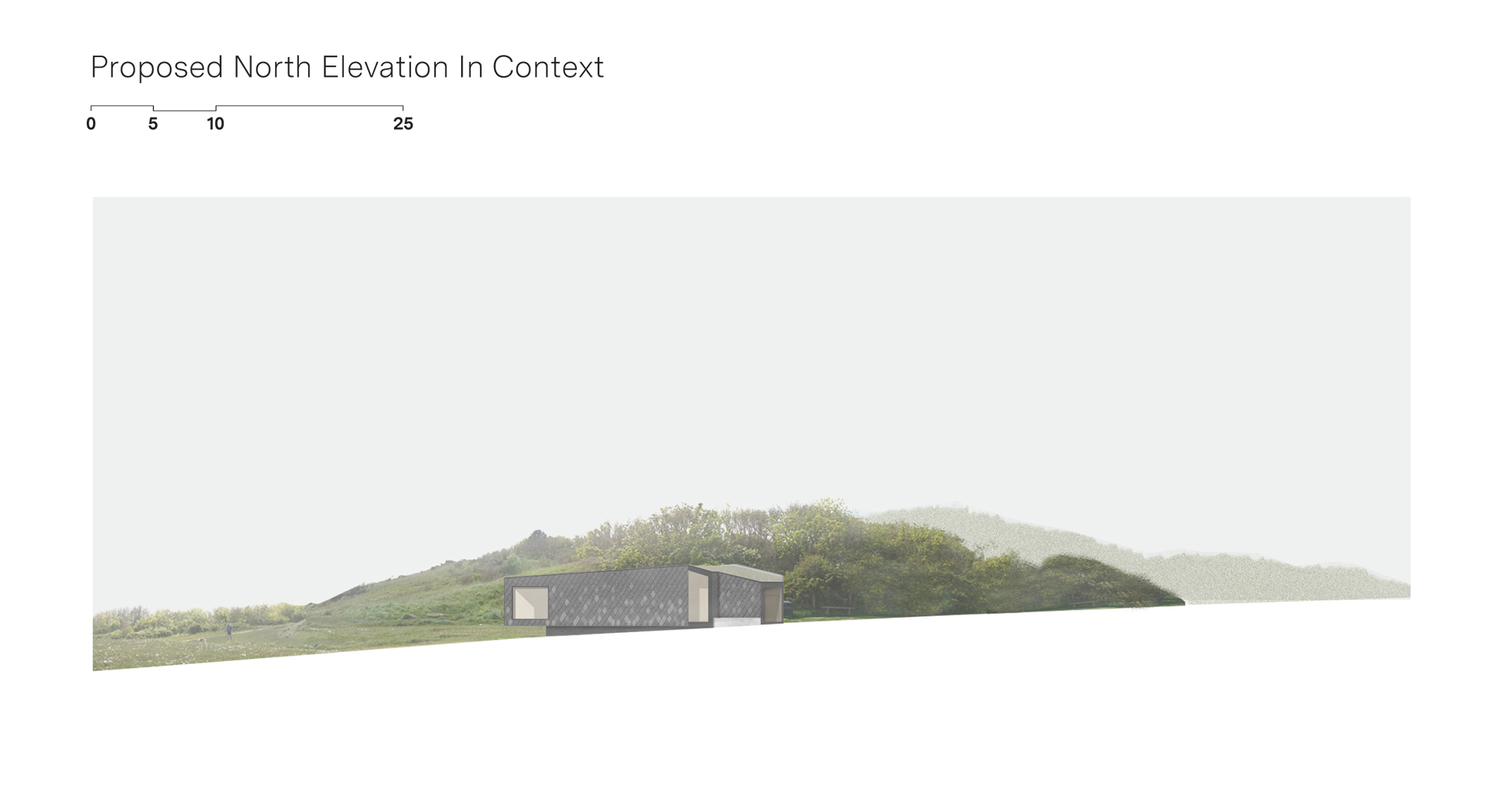
The design complements the 'heavy' lighthouse, grounded to the rock, with a lightweight 'floating' structure merging from the landscape. It features framed views of the lighthouse and large open views of the coast. The building almost wears the Trust's mission for the centre as a jacket: Exposed timber panel structure internally with 100% recycled plastic tiles from construction waste externally, illustrating how materials can be reused and not end up polluting our coasts and seas.
Planning was complex but achieved due to the exceptional circumstances of the project, the design, and its community use. The building is built with a monocoque CLT structure. The panels are the structure of the wall and roof, and become the internal finish. This is both low in embodied carbon and quick to construct in this harsh environment. Externally the CLT is wrapped in insulation and cladded in 100% recycled tiles made from plastic waste from the building industry. There is a sedum enhancing biodiversity with PVs which help run the air source heat pumps and MVHR.
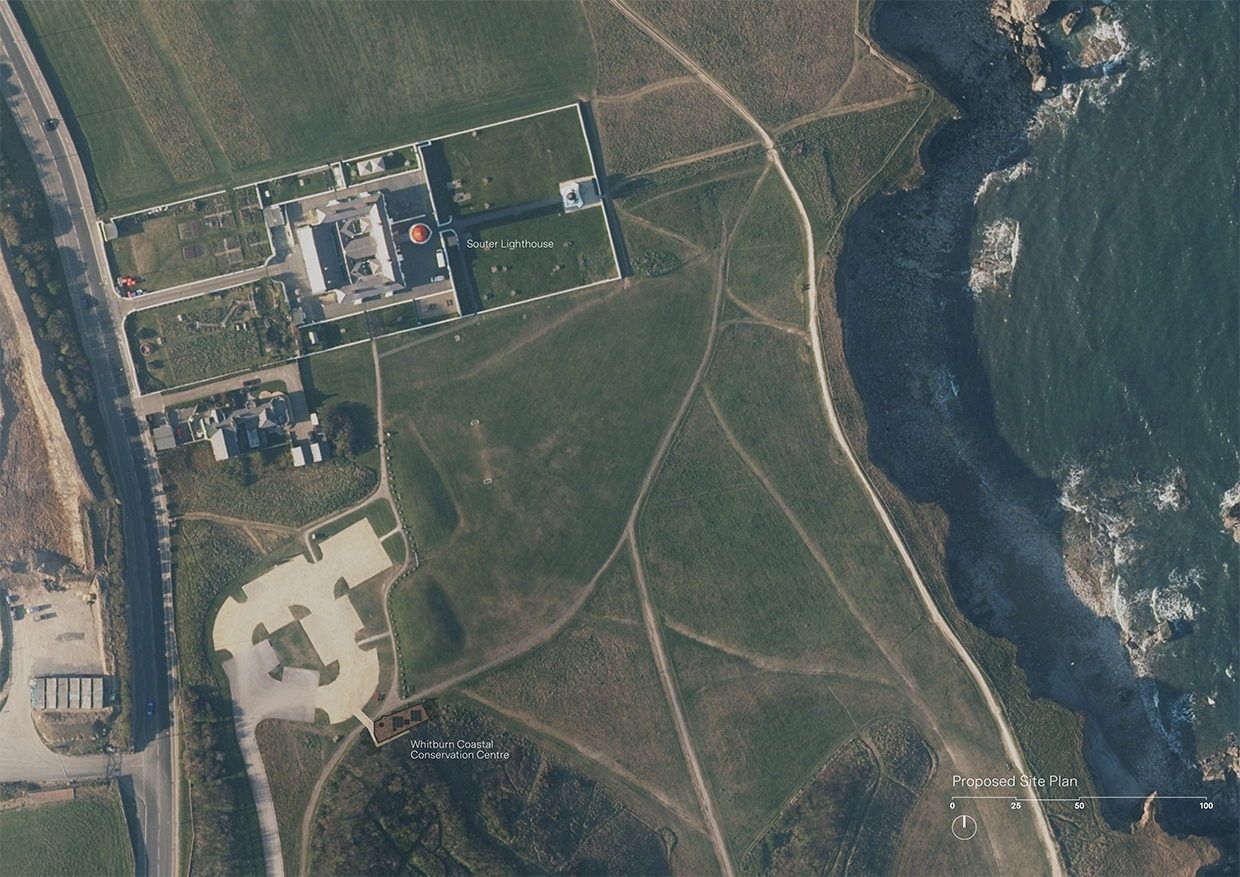
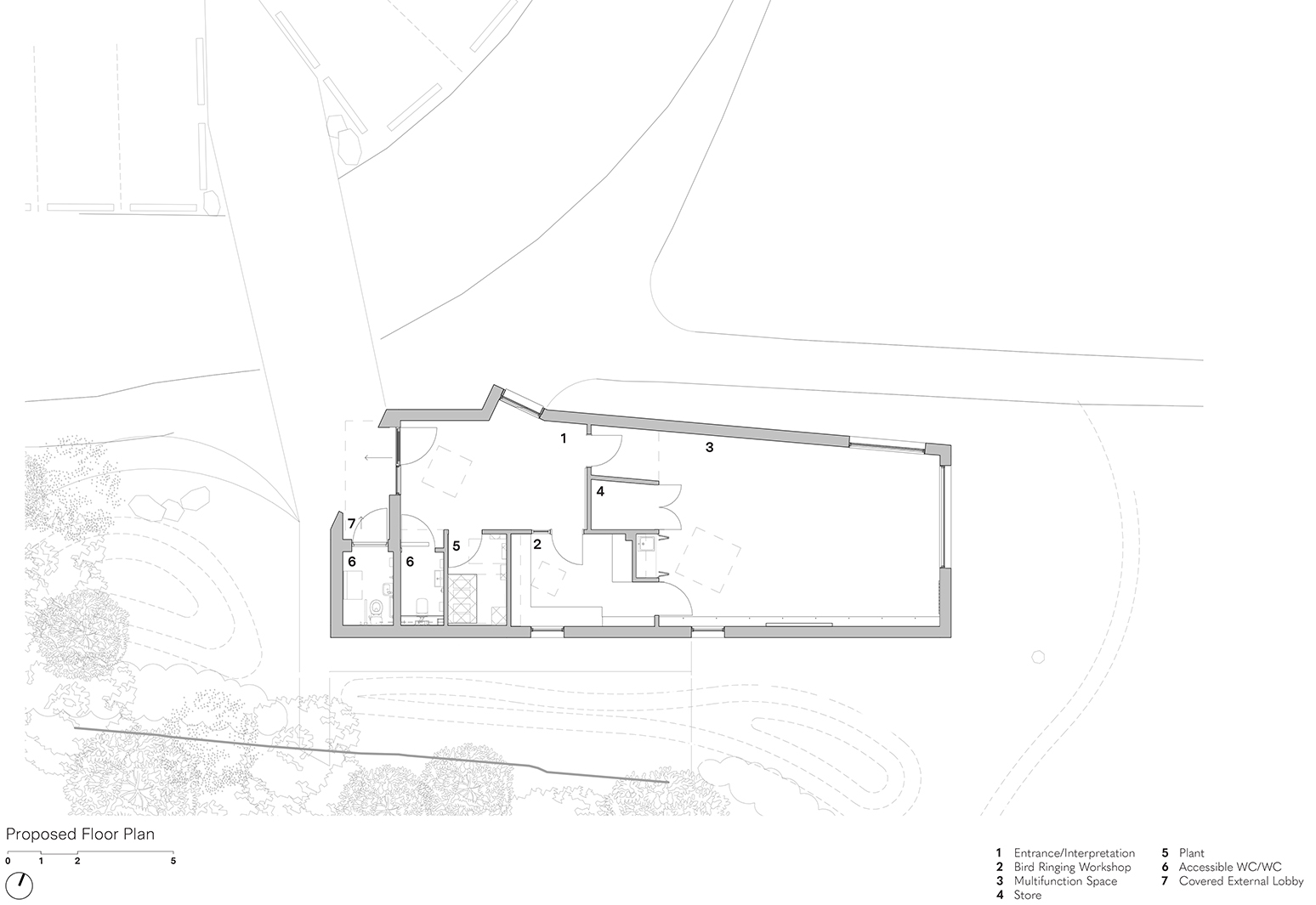
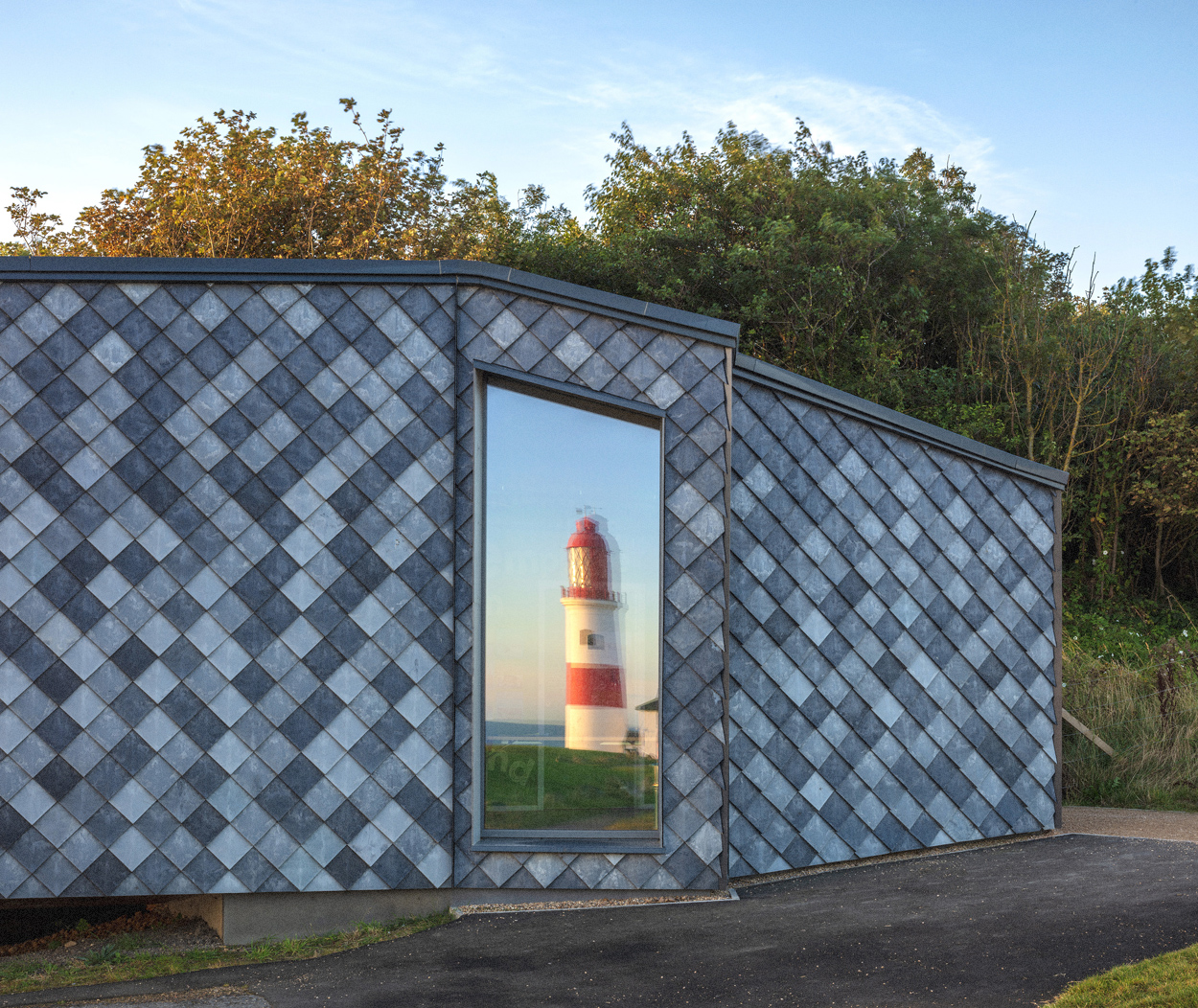
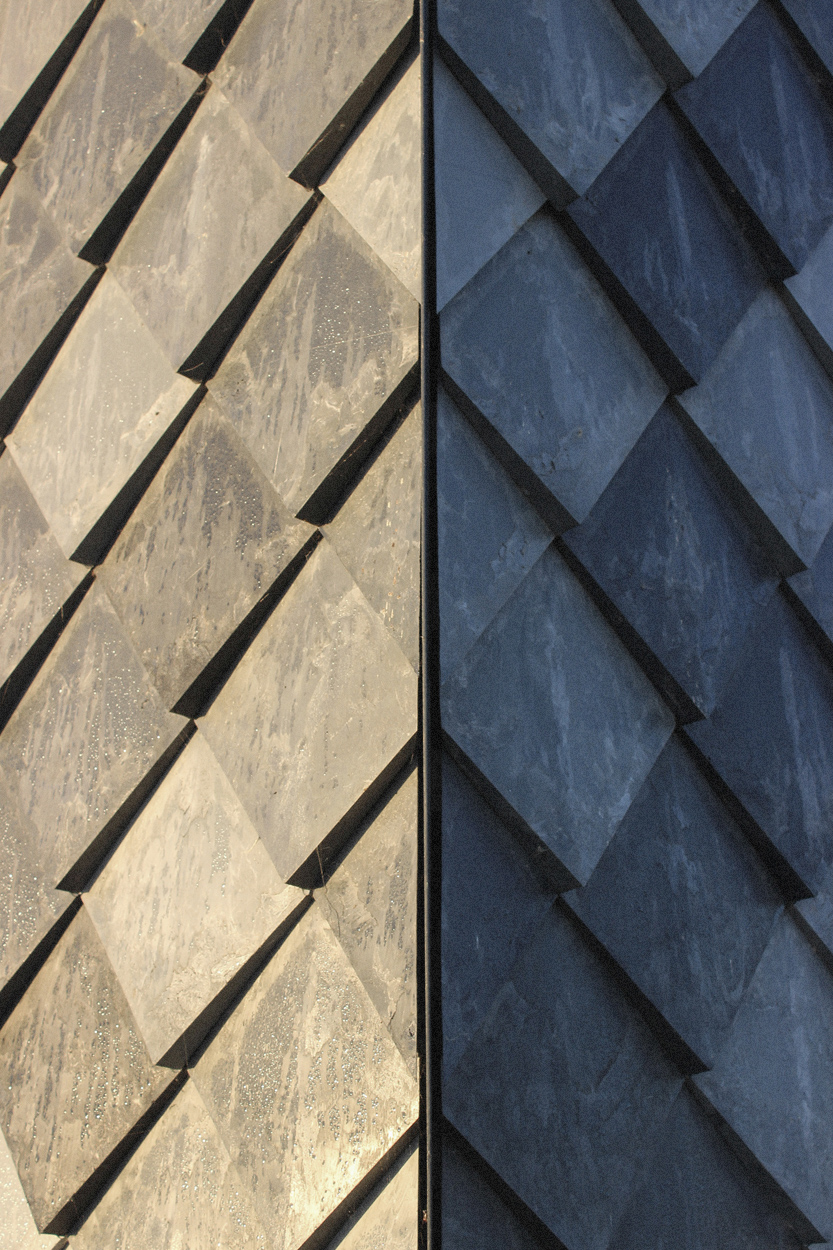
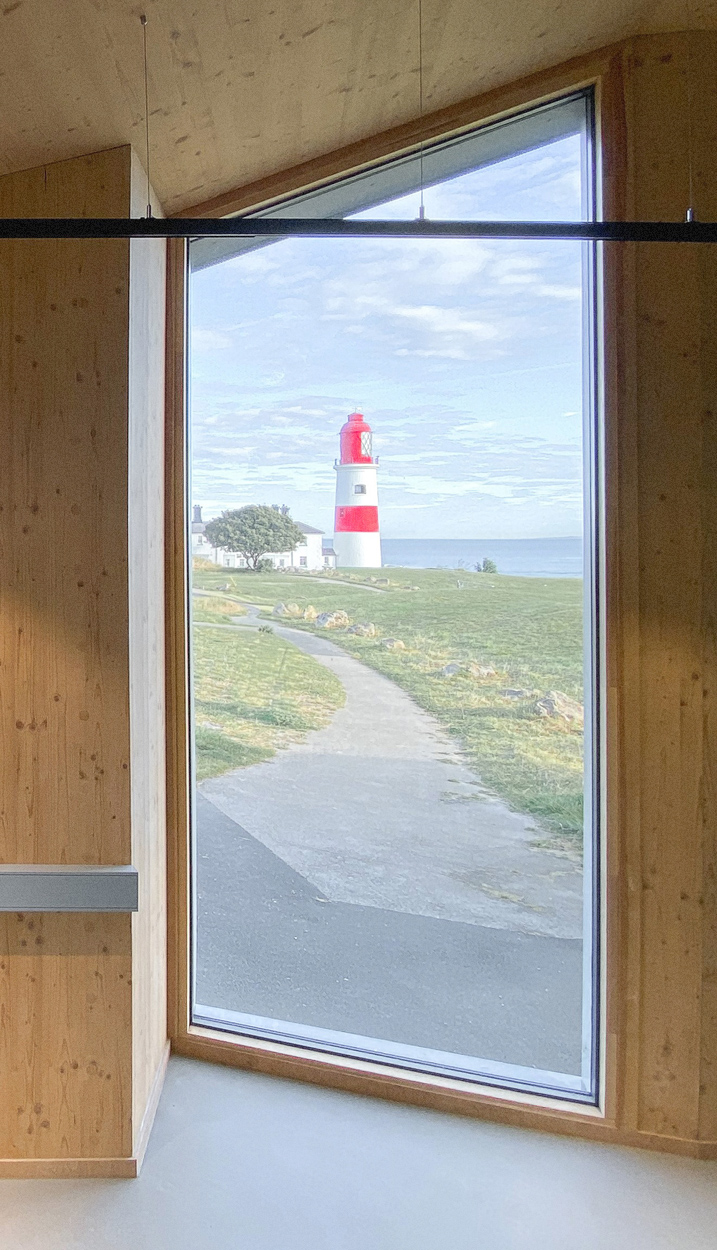
The client was ambitious in their brief and the building had to met this ambition and be a hub for the community. The centre is regionally significant for the work National Trust and their partners do there. It is also internationally significant in the work the bird ringers do by contributing data on the local and migratory bird population. This goes to an international data base of birds so conservationists around the world can access this information.
National Trust have used this project as a pilot project for their sustainability matrix. This was in order to test the matrix and this project against their criteria. These findings used to hone their matrix for use on future National Trust projects. WCCC has been a success for both the client, the community and the design team and achieved EPC A-rating.

